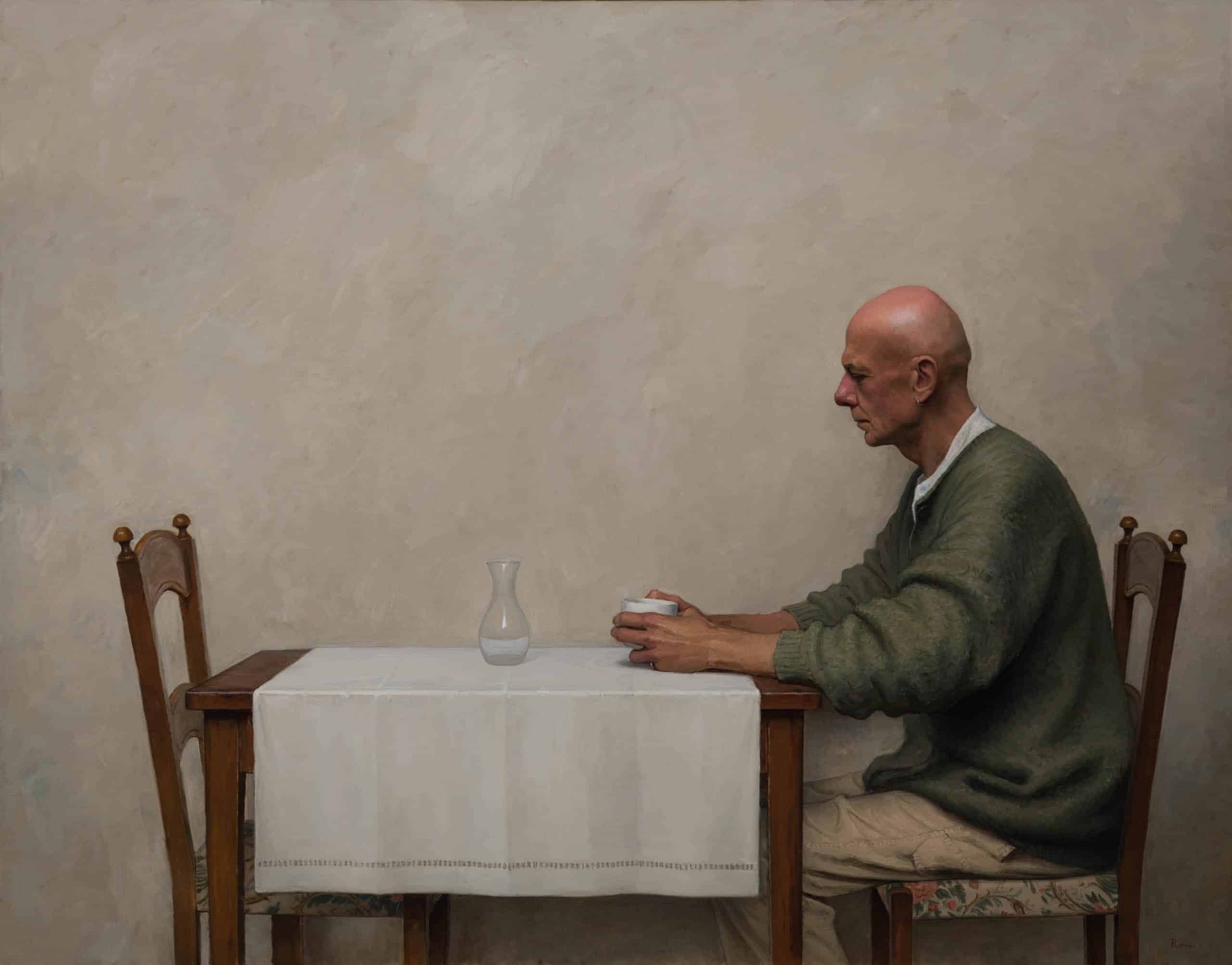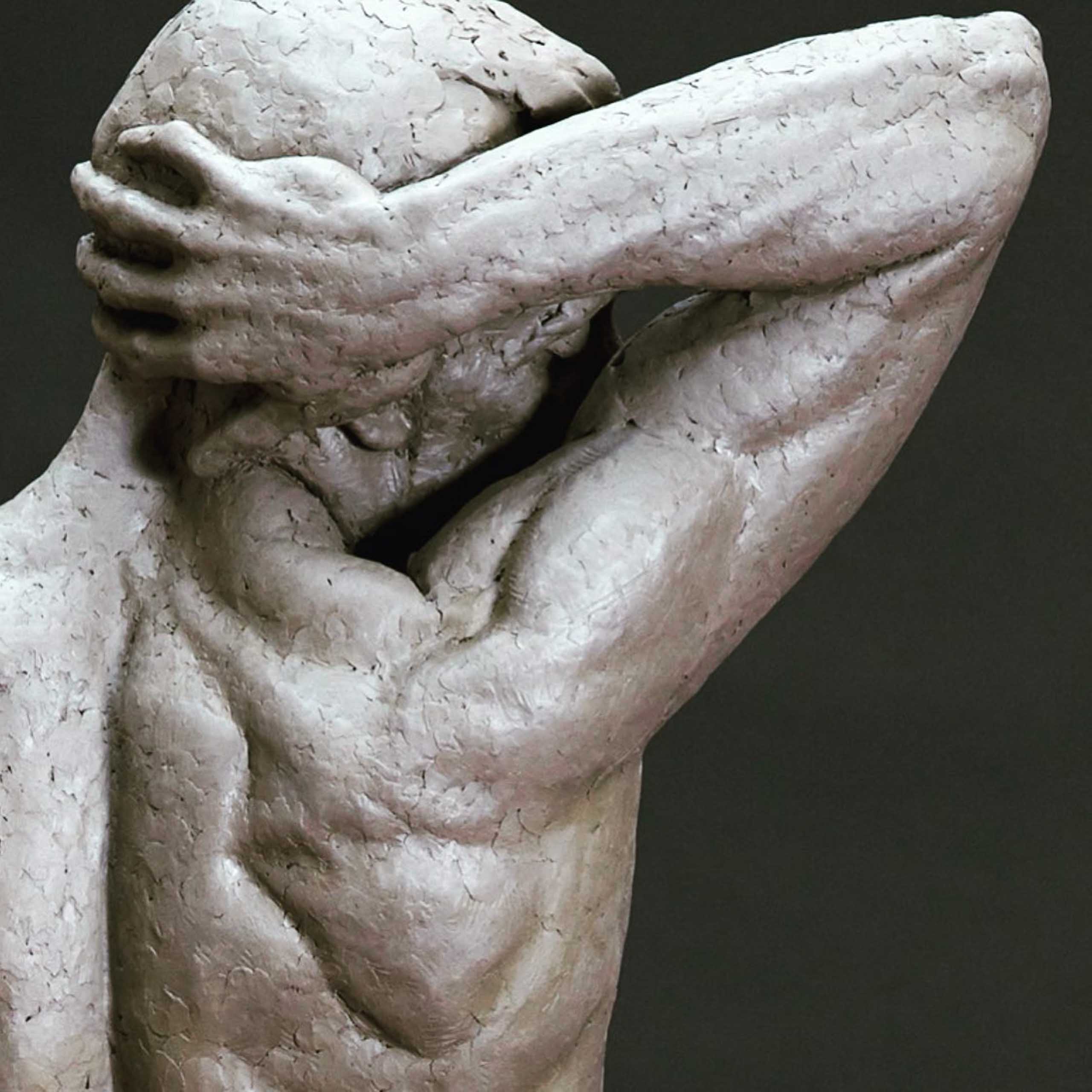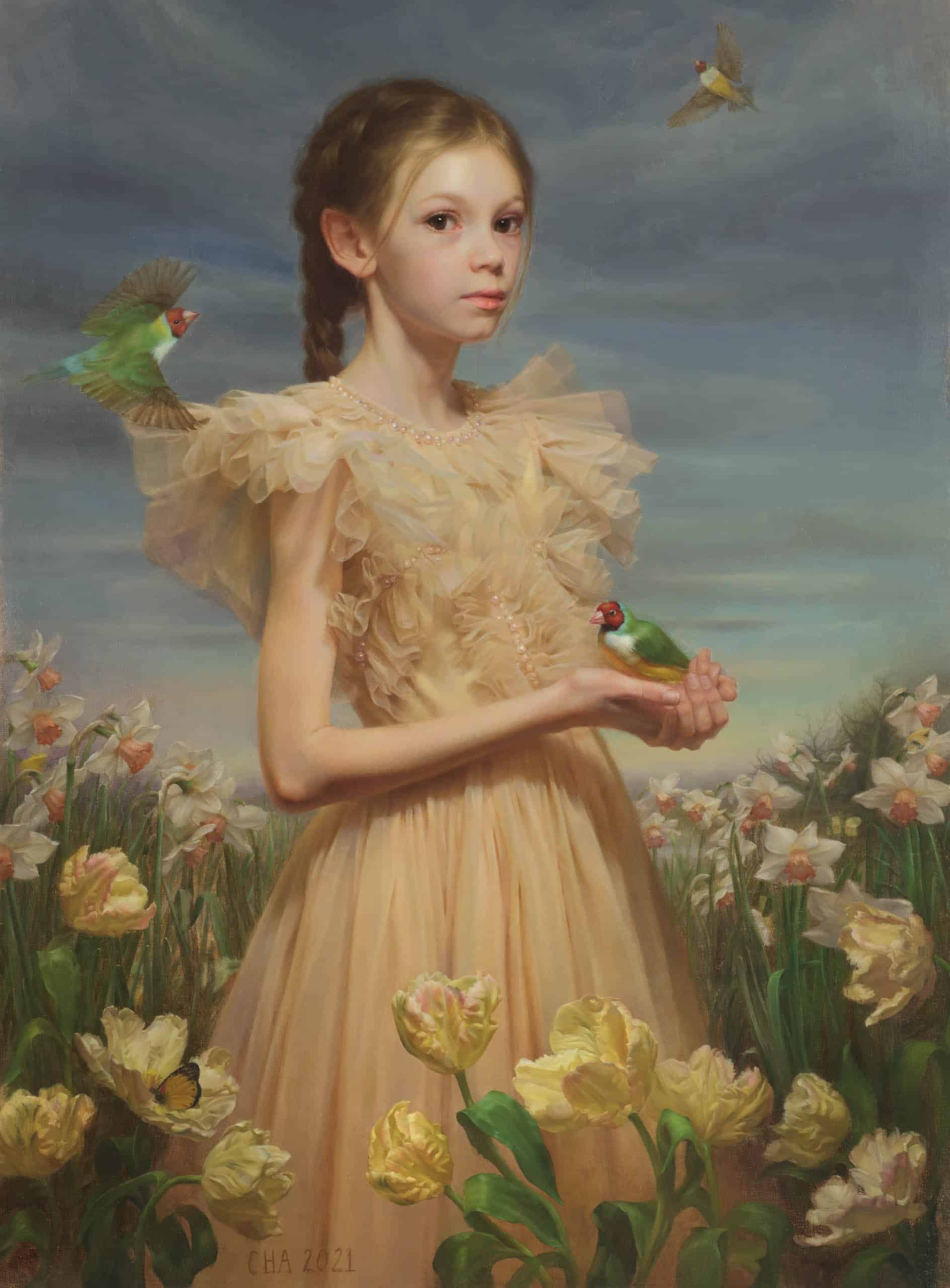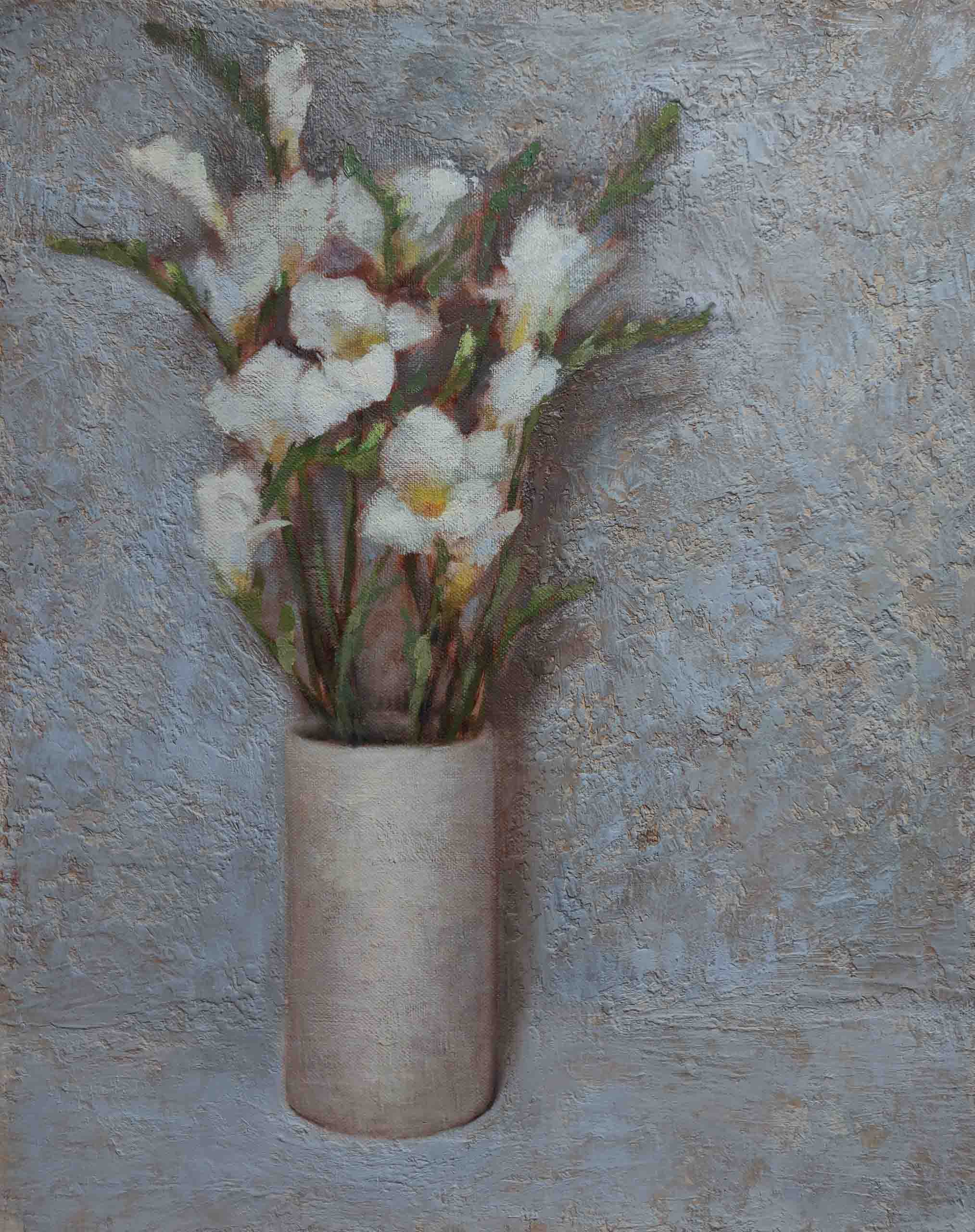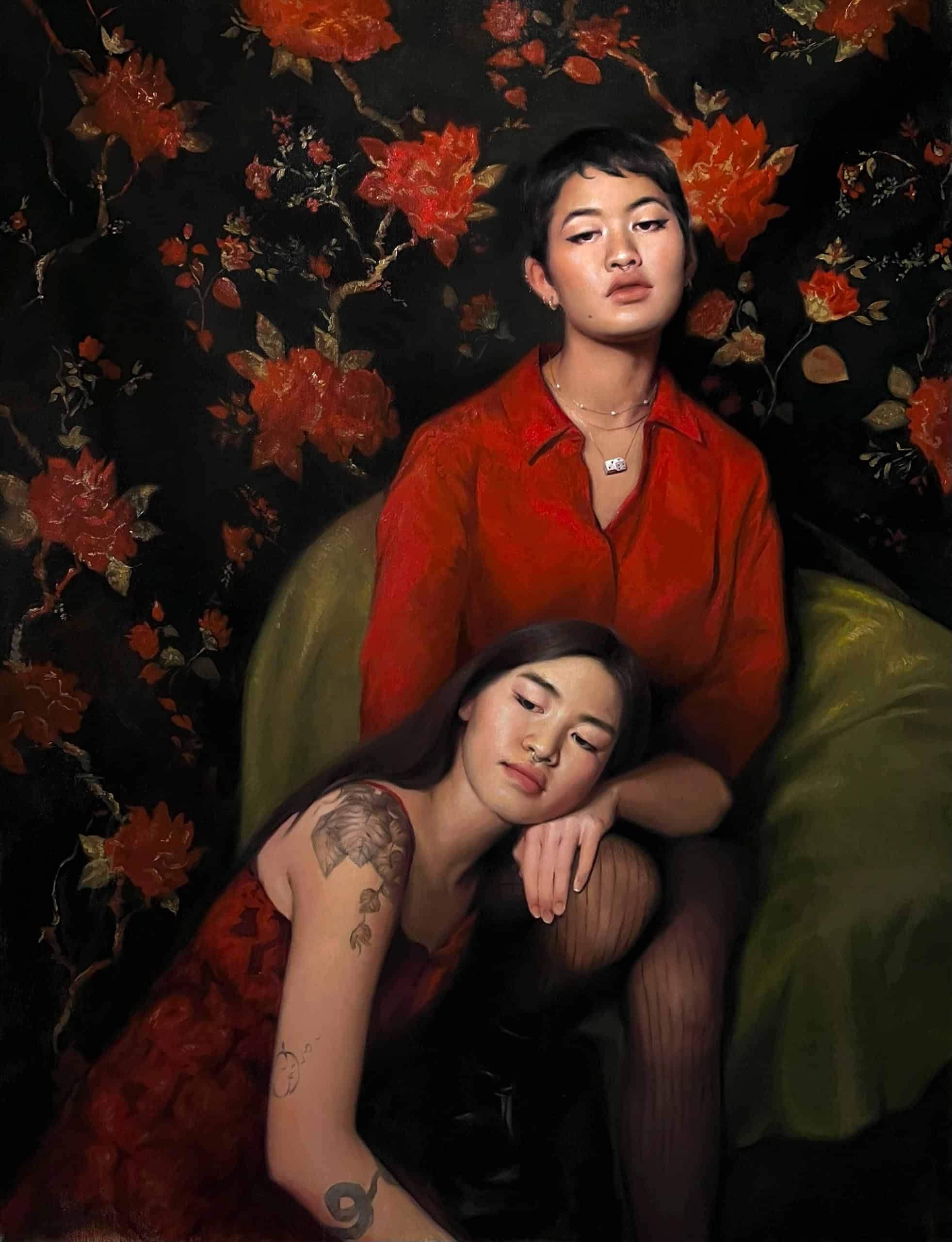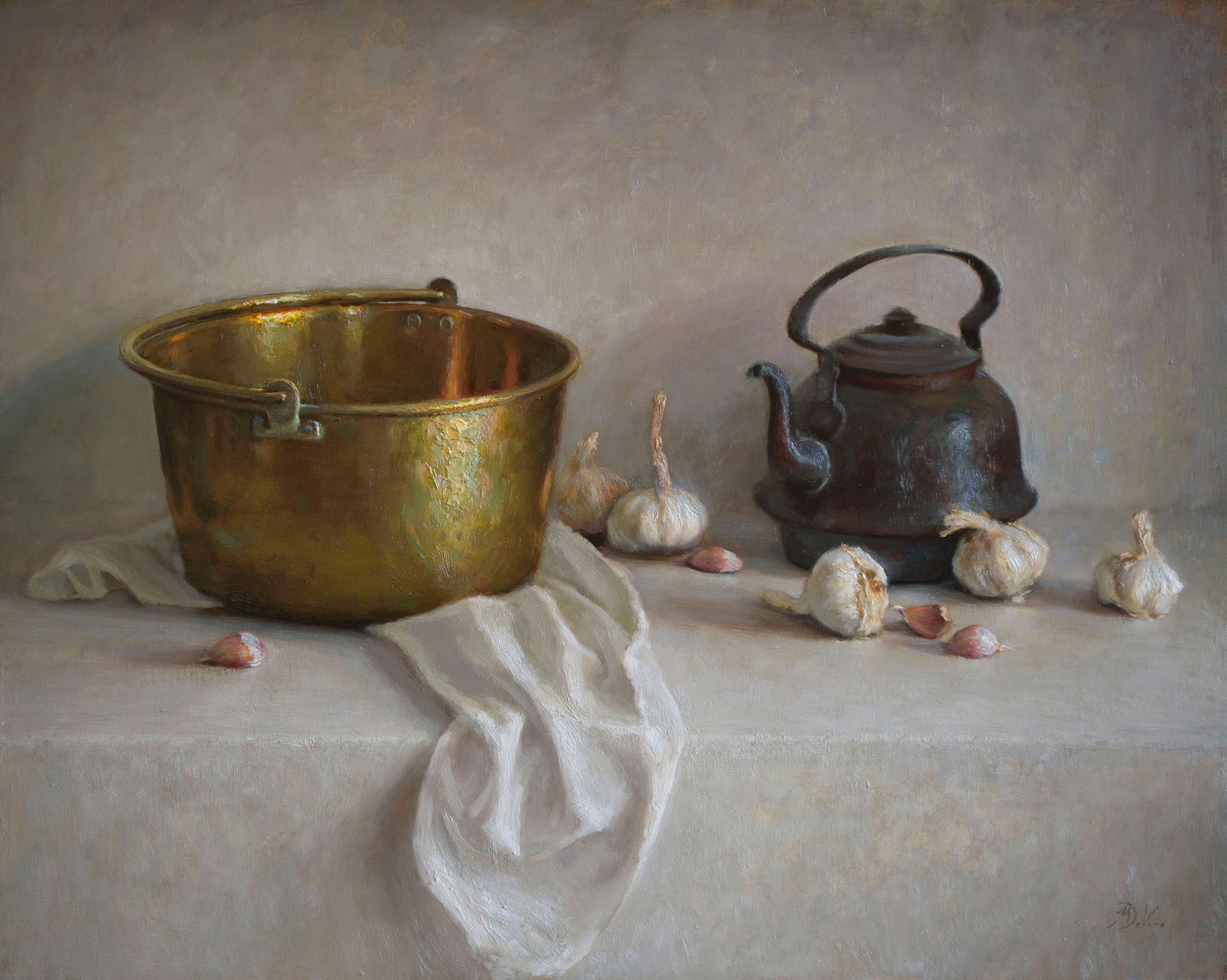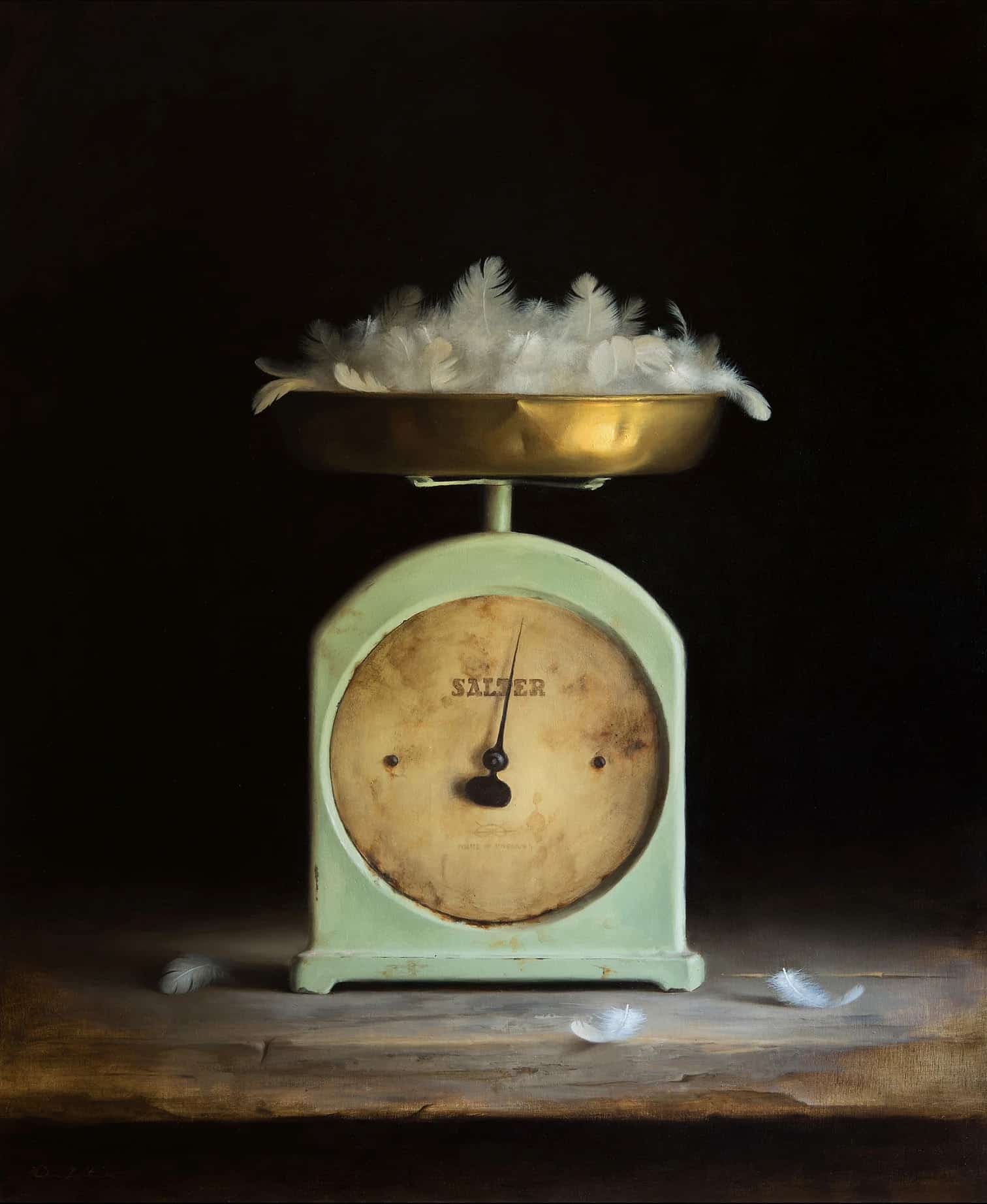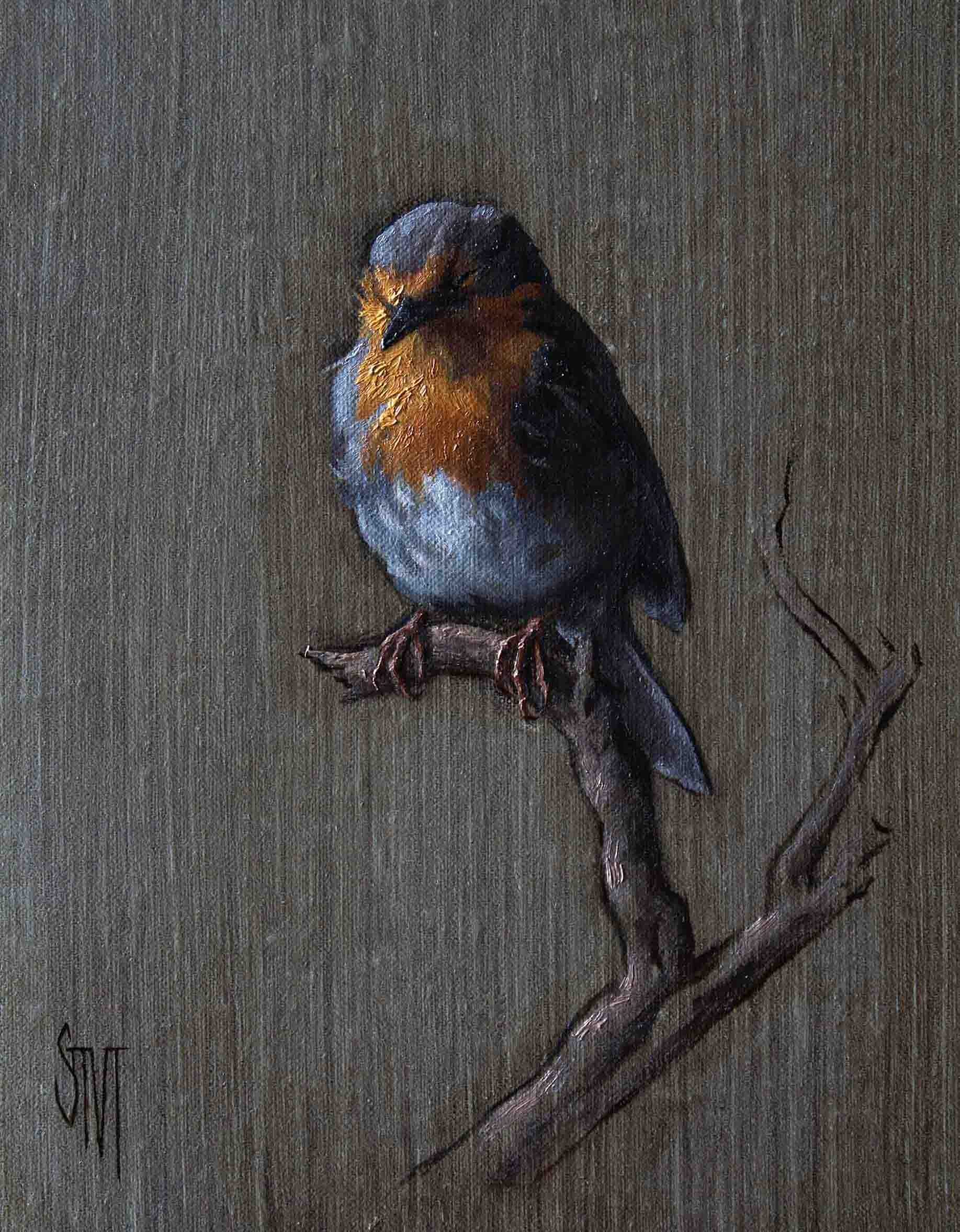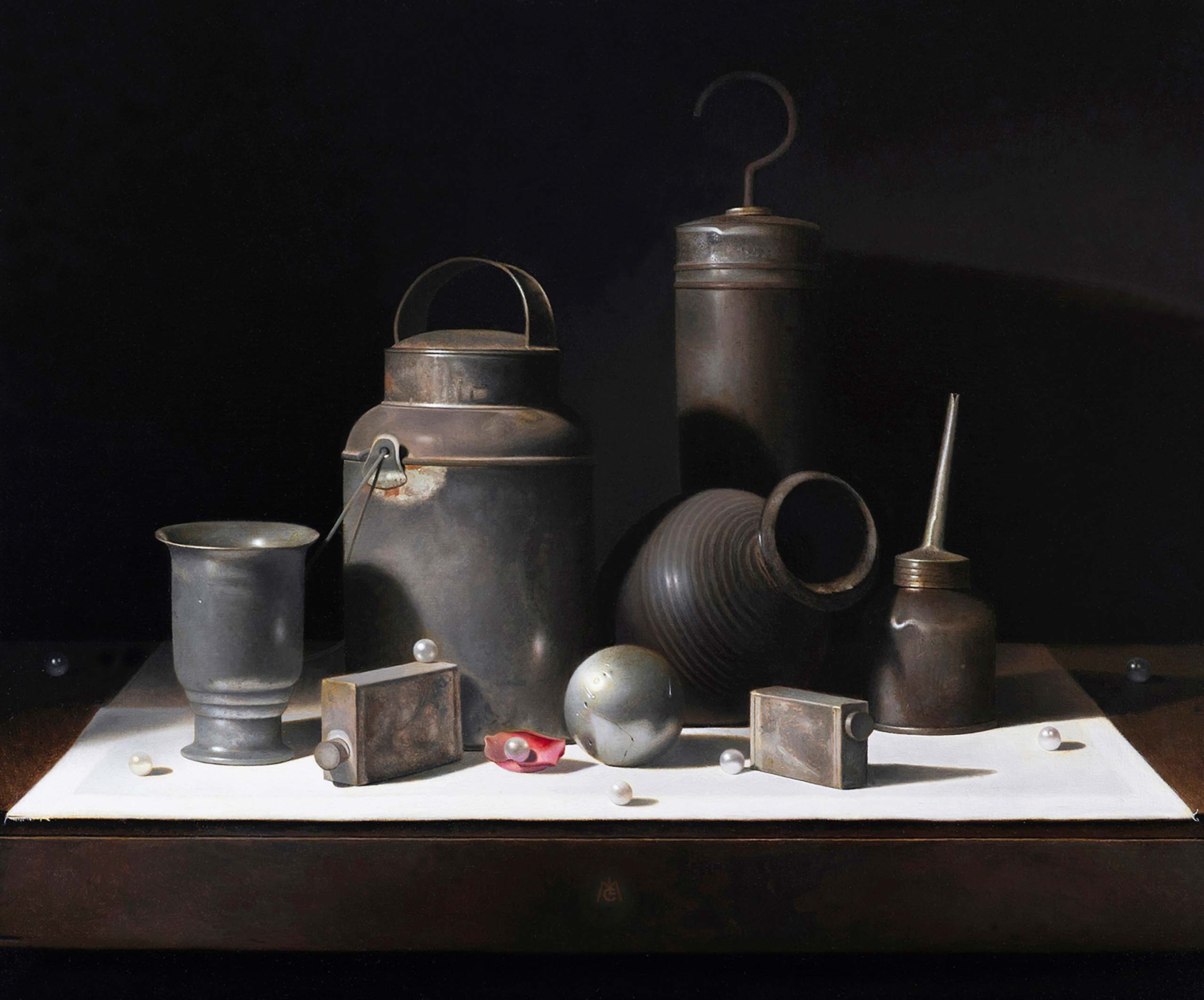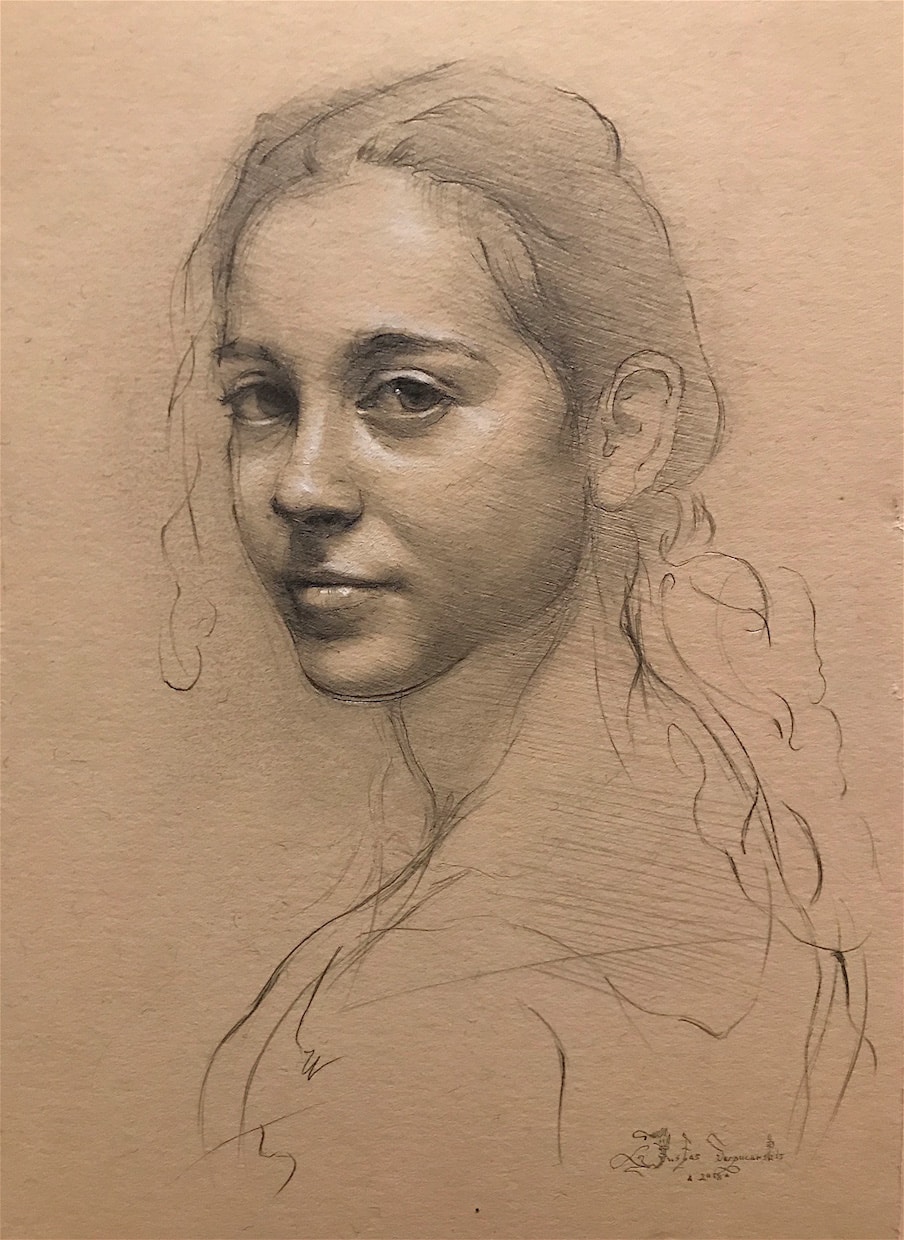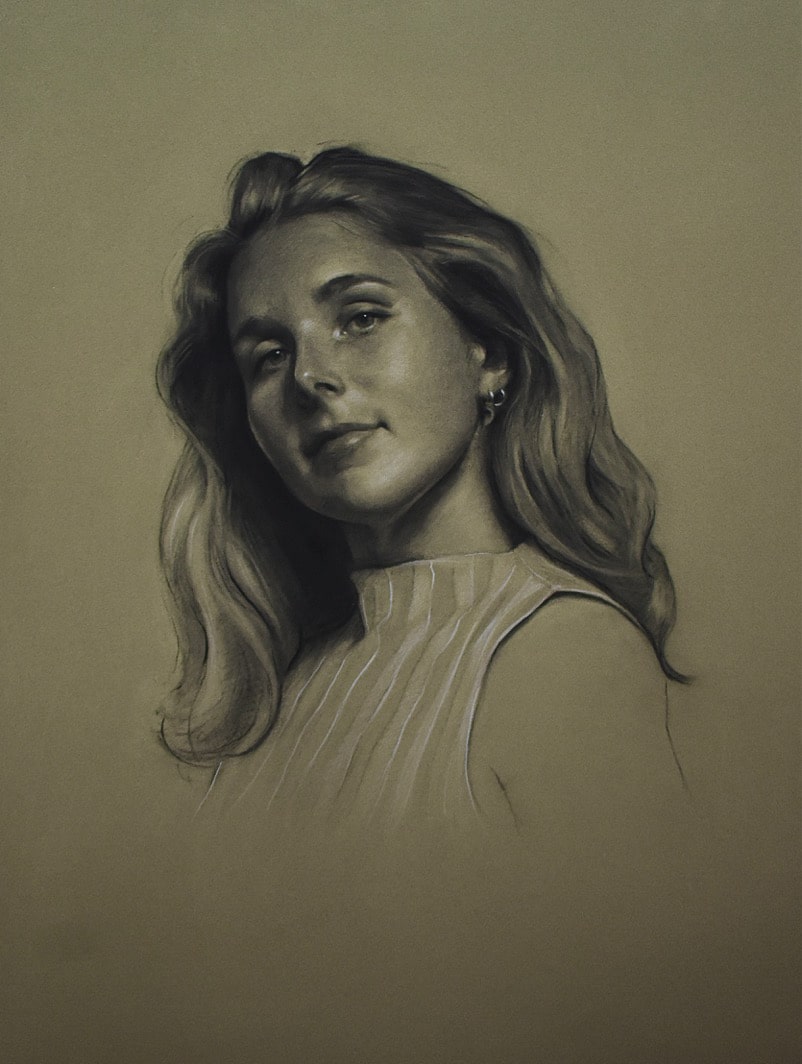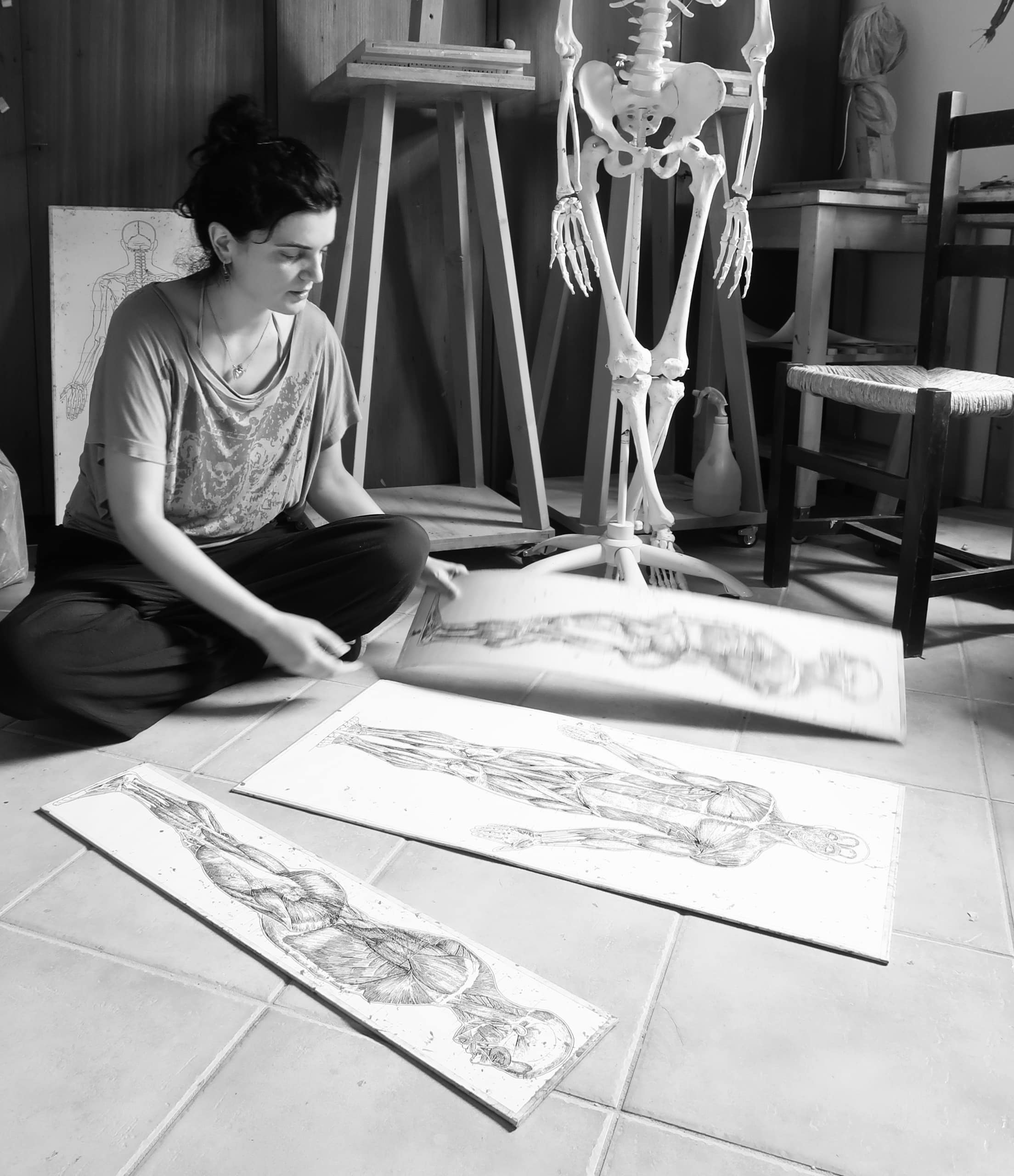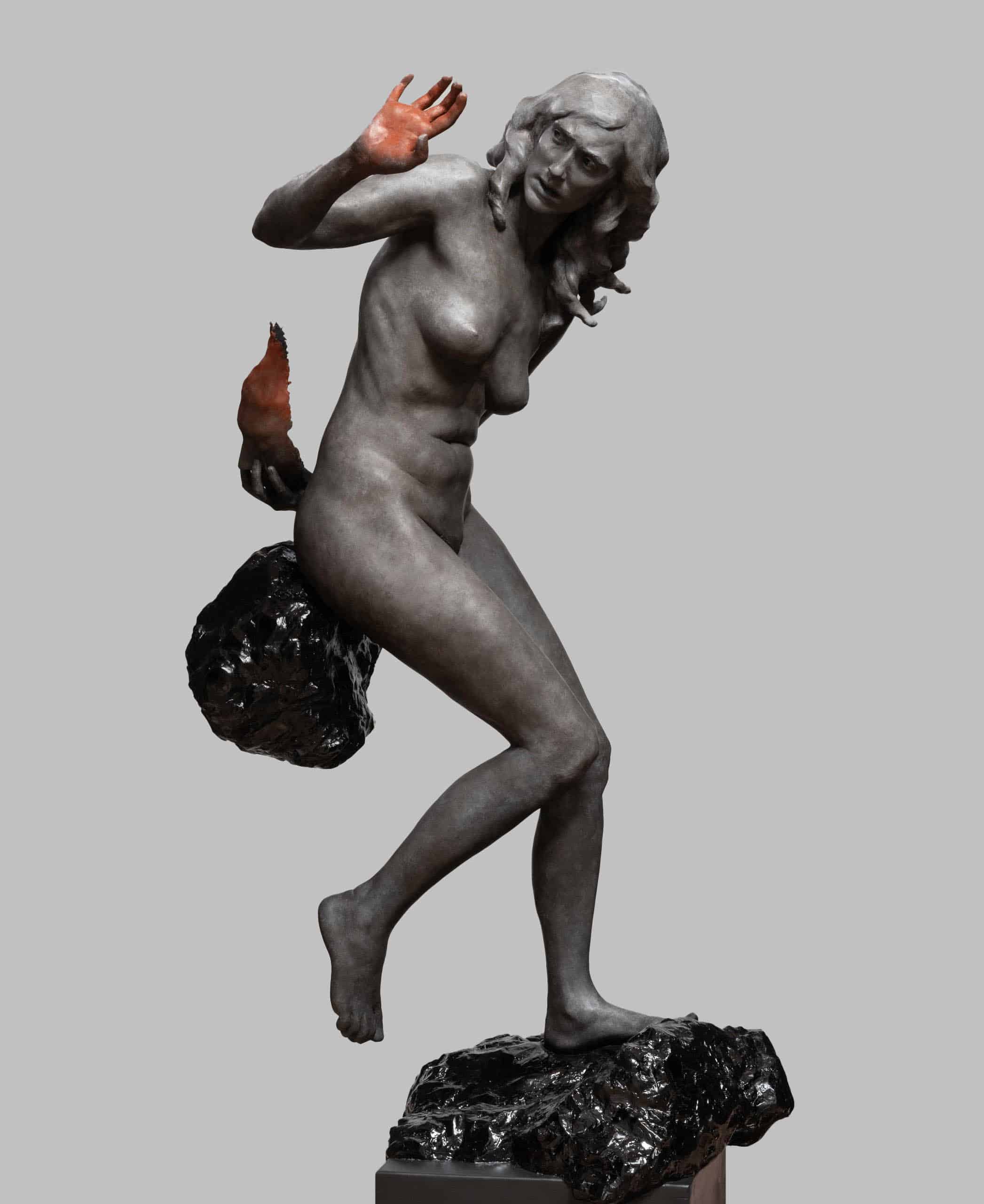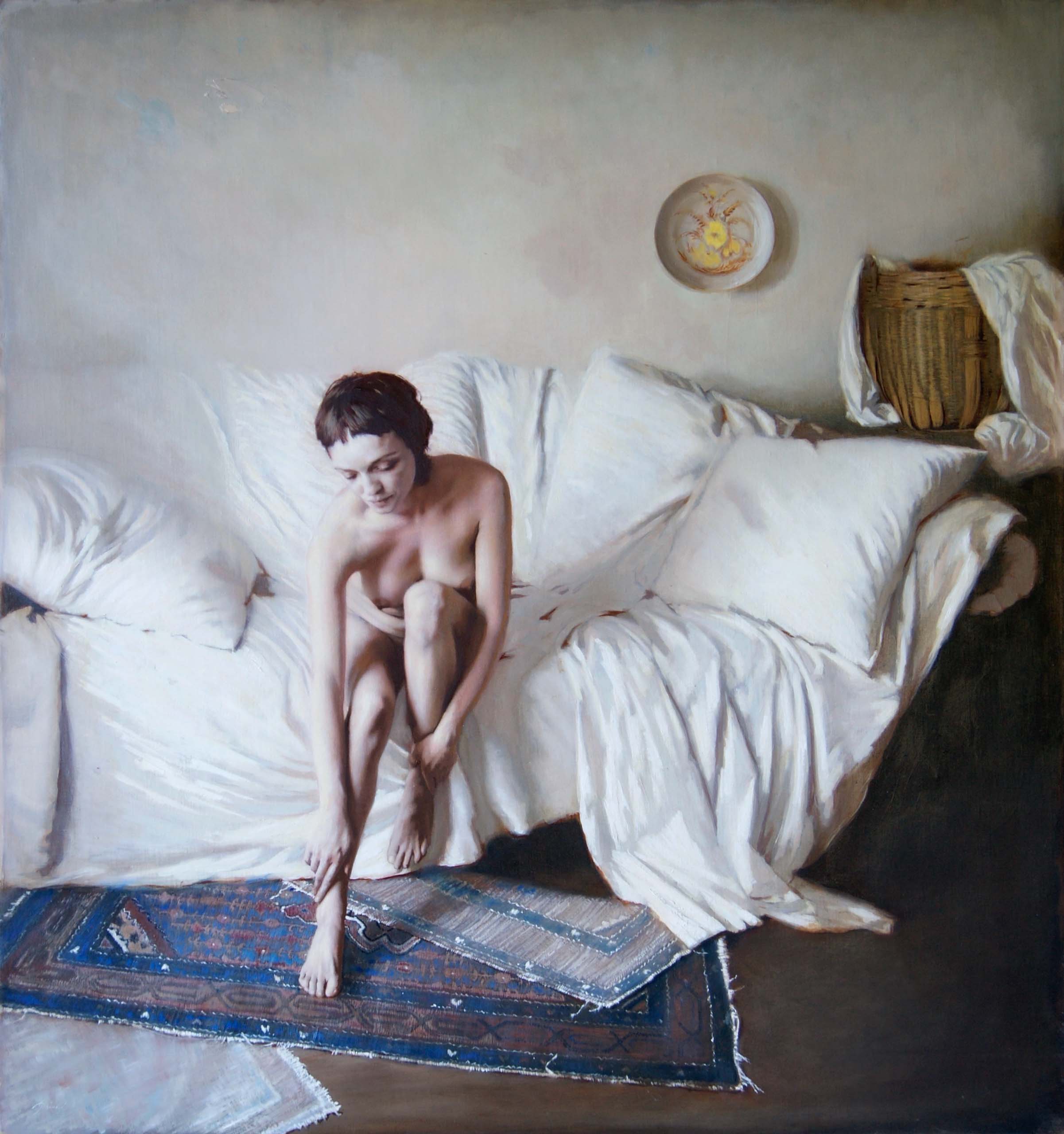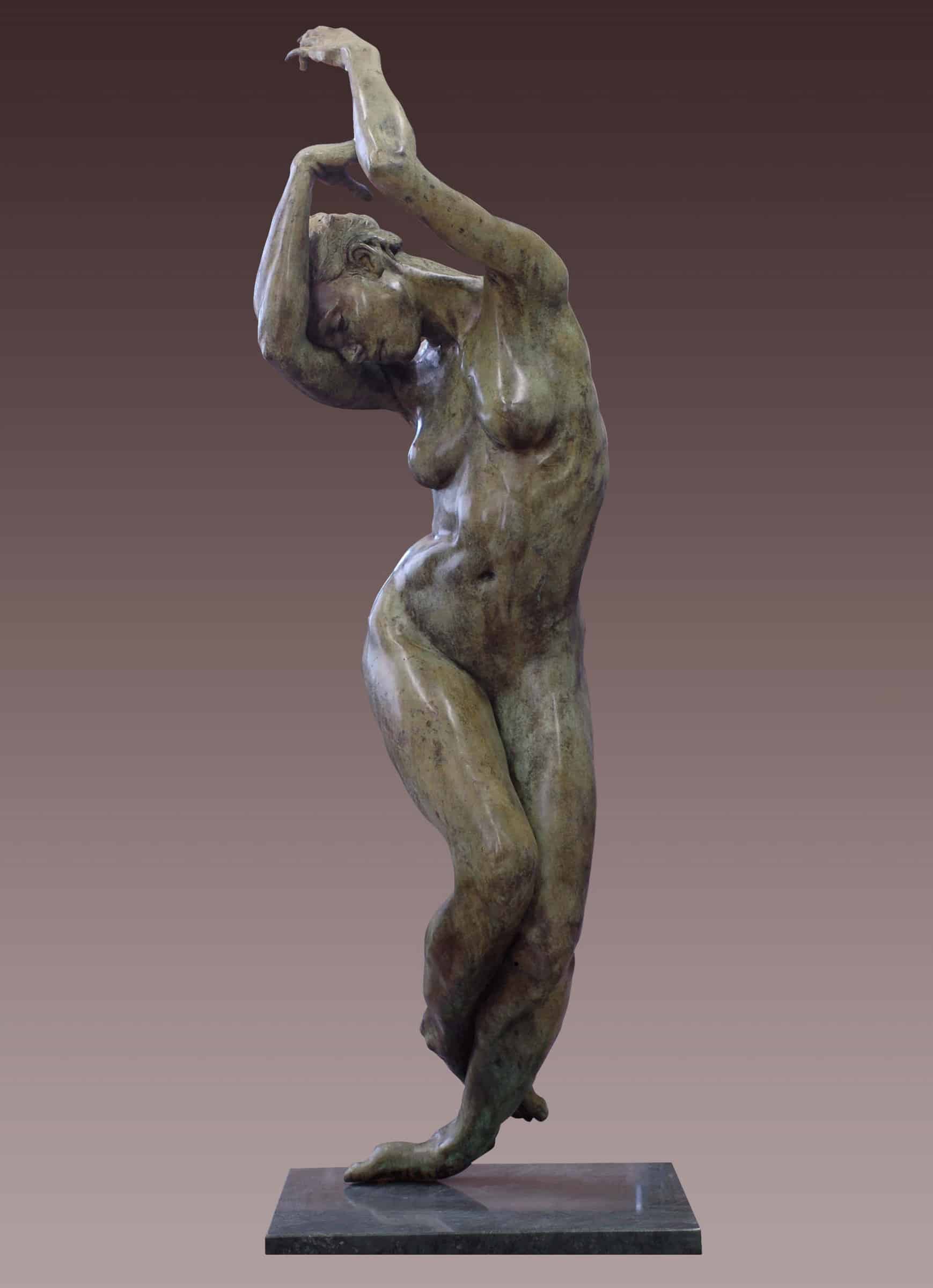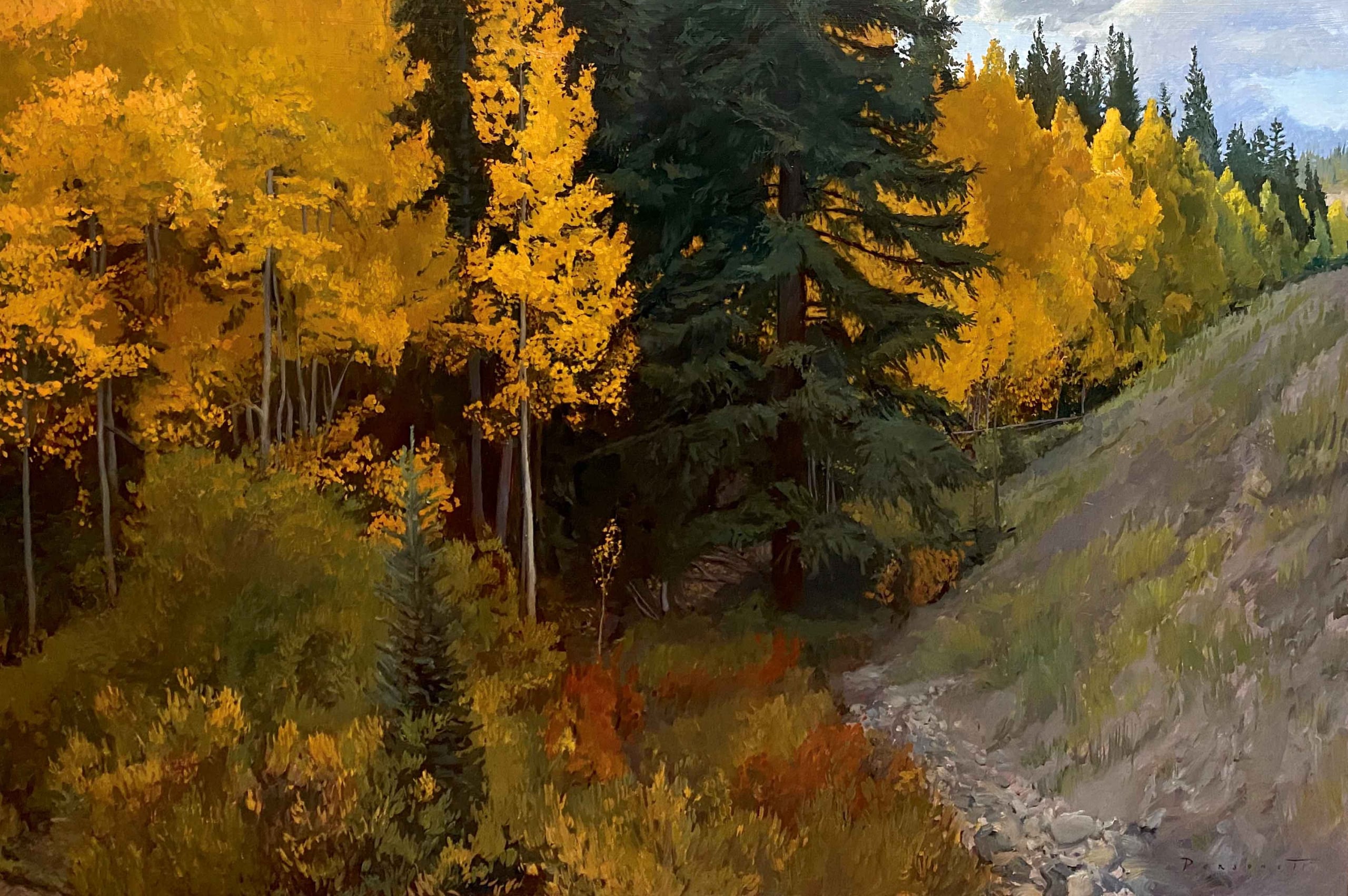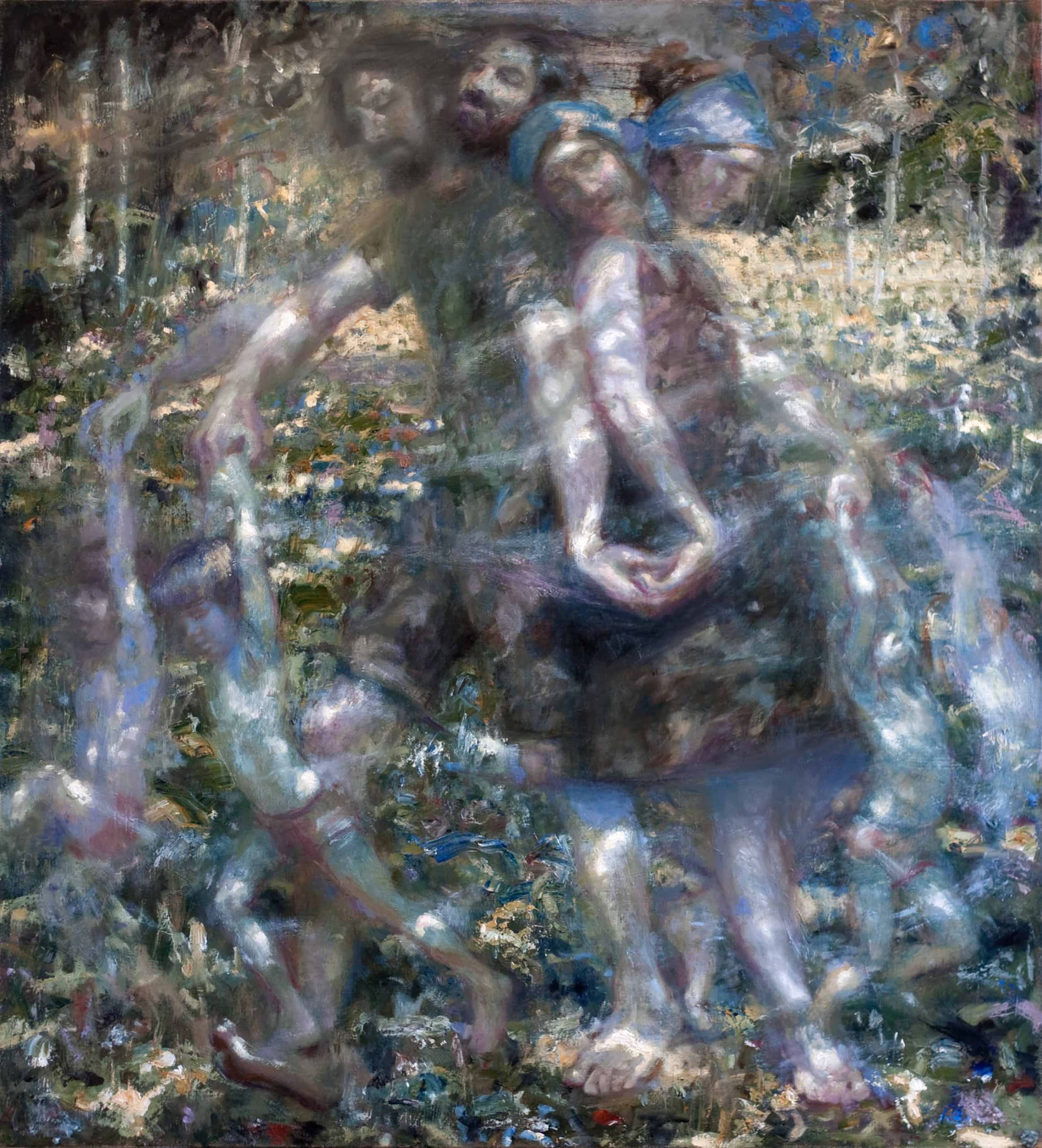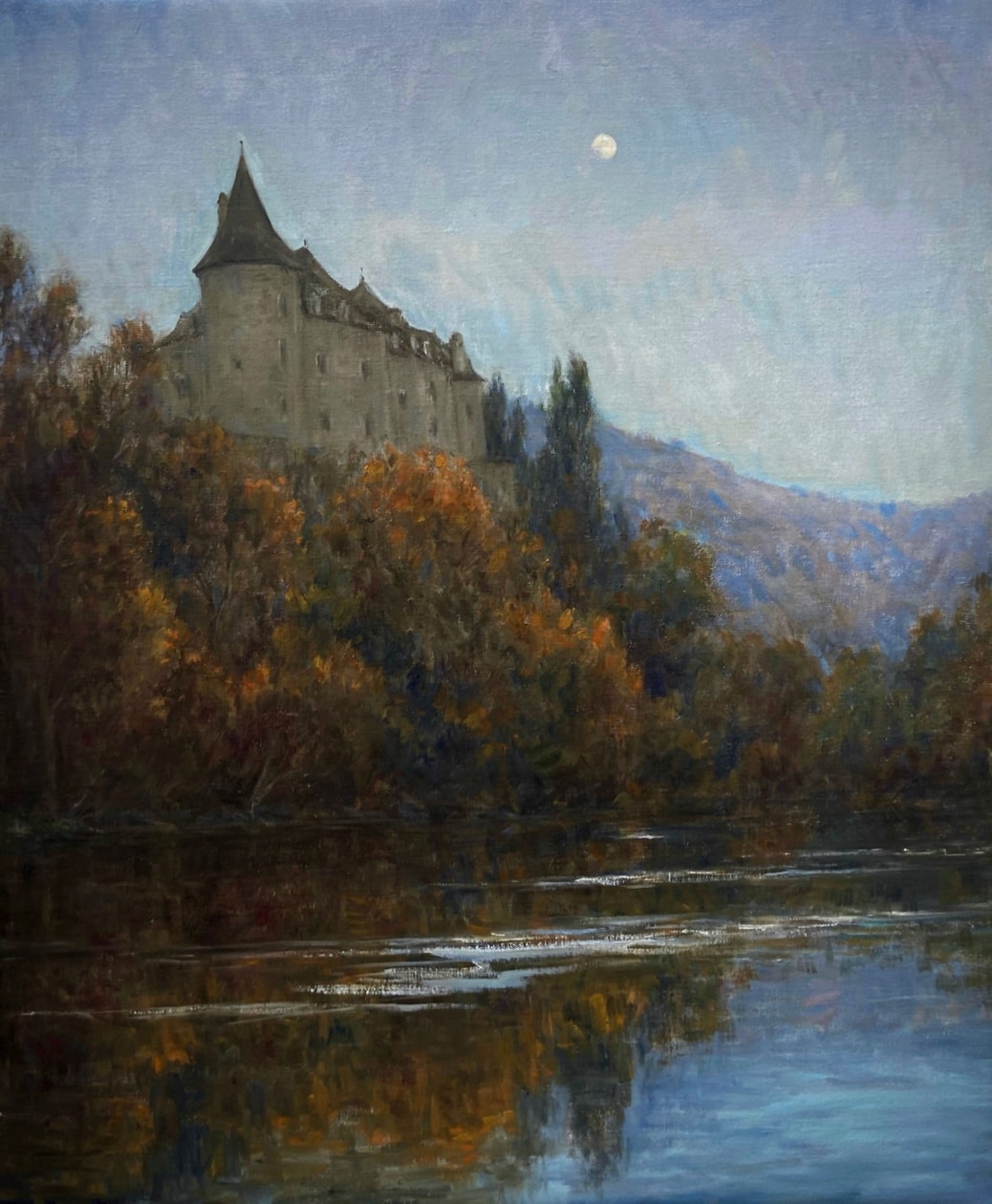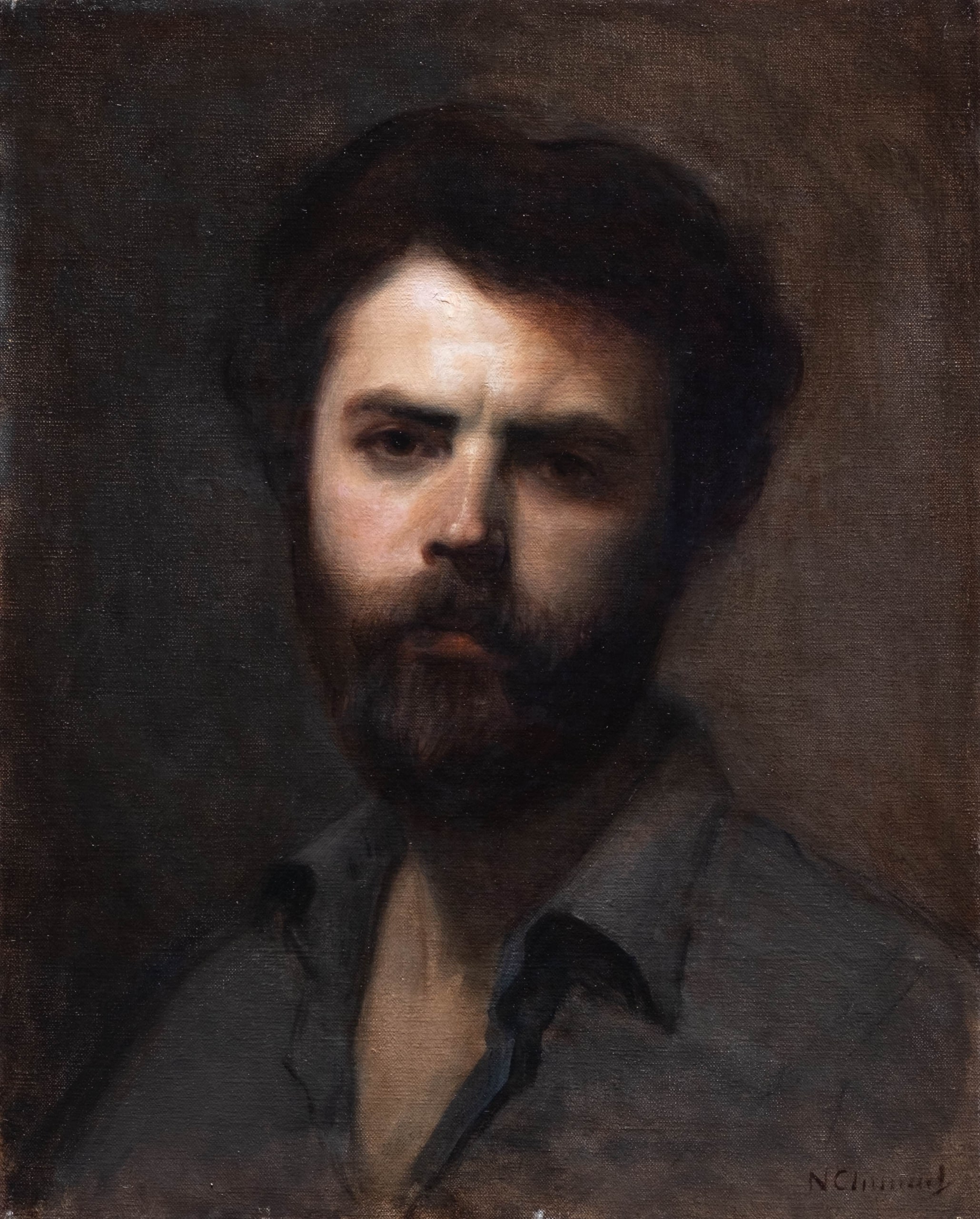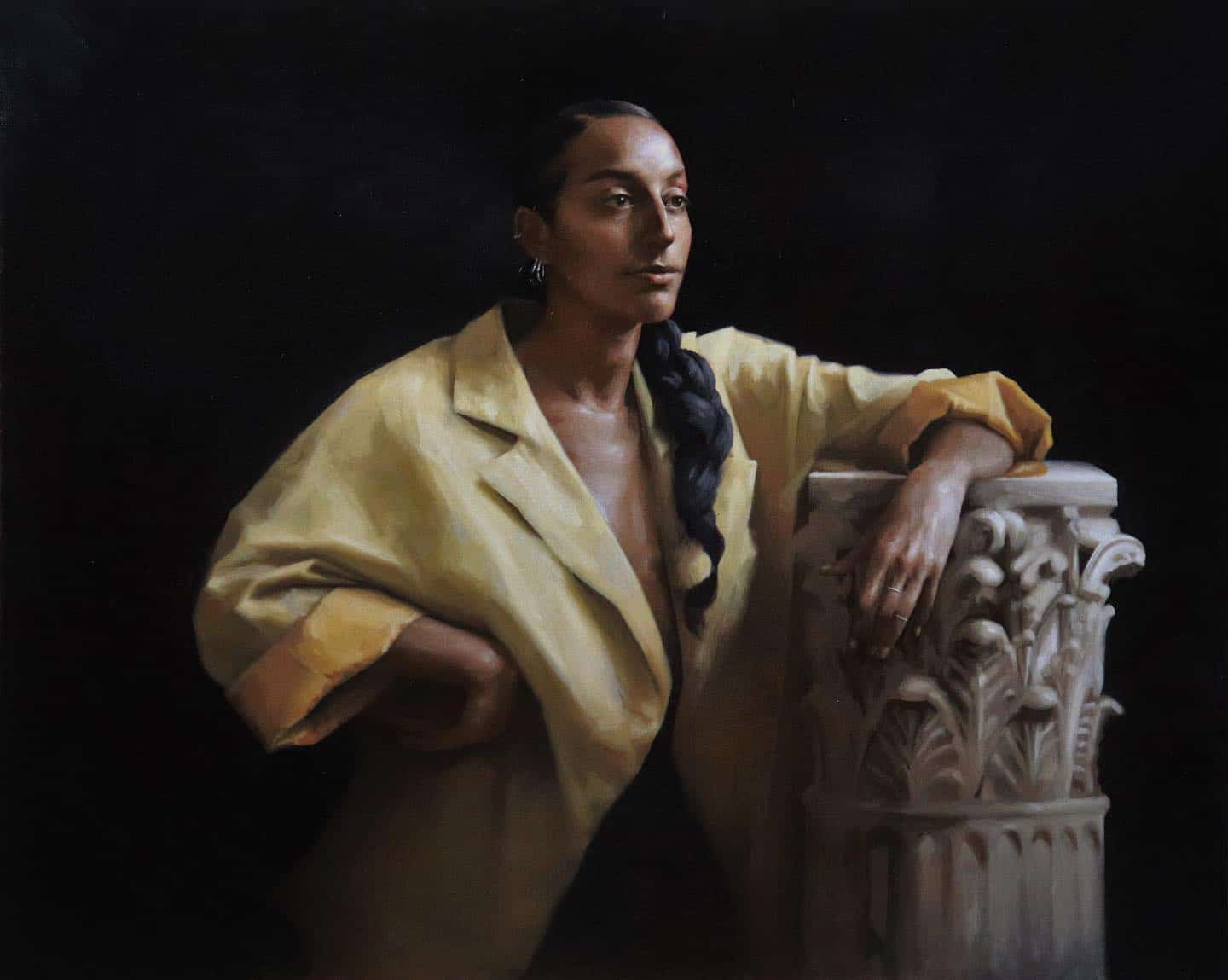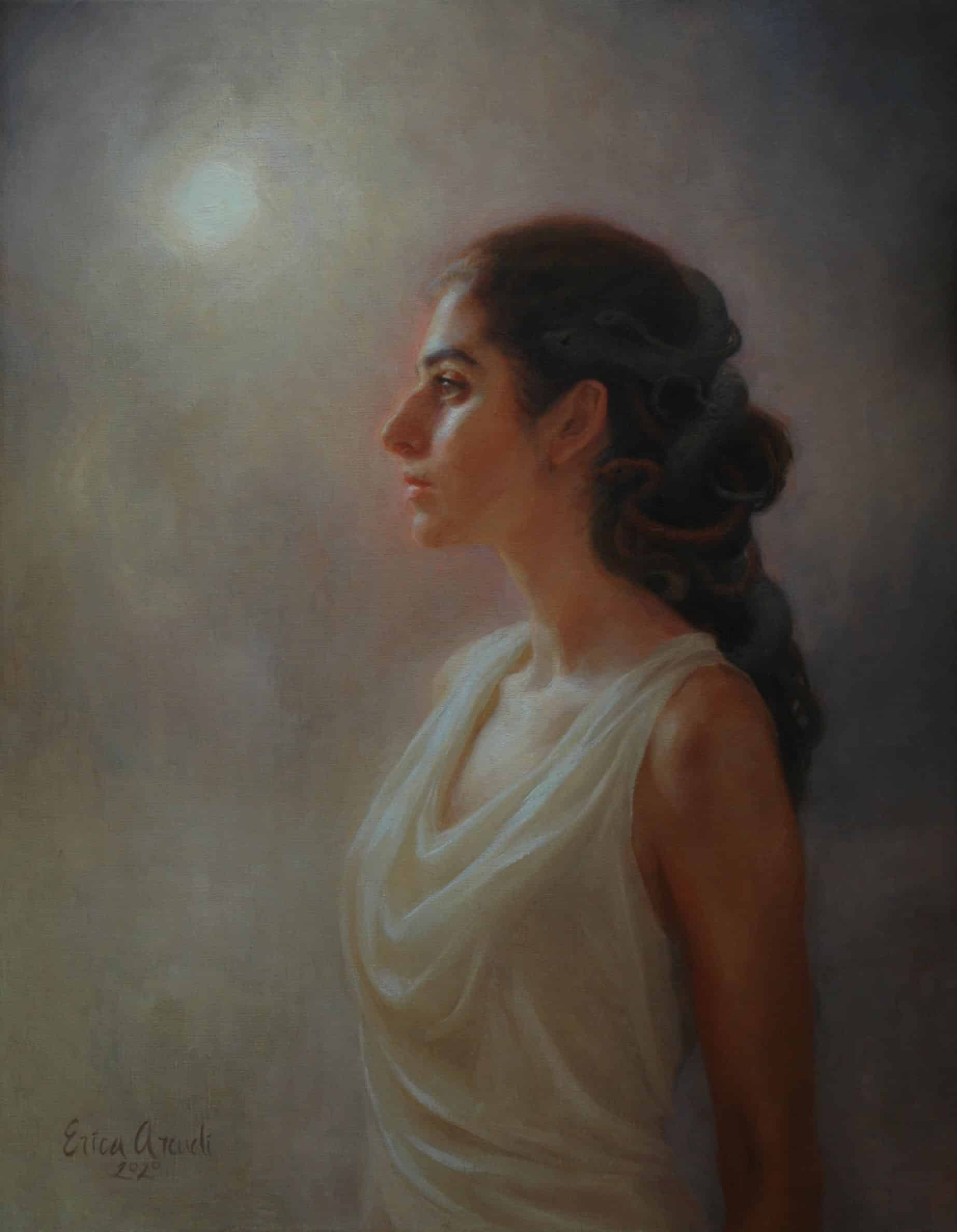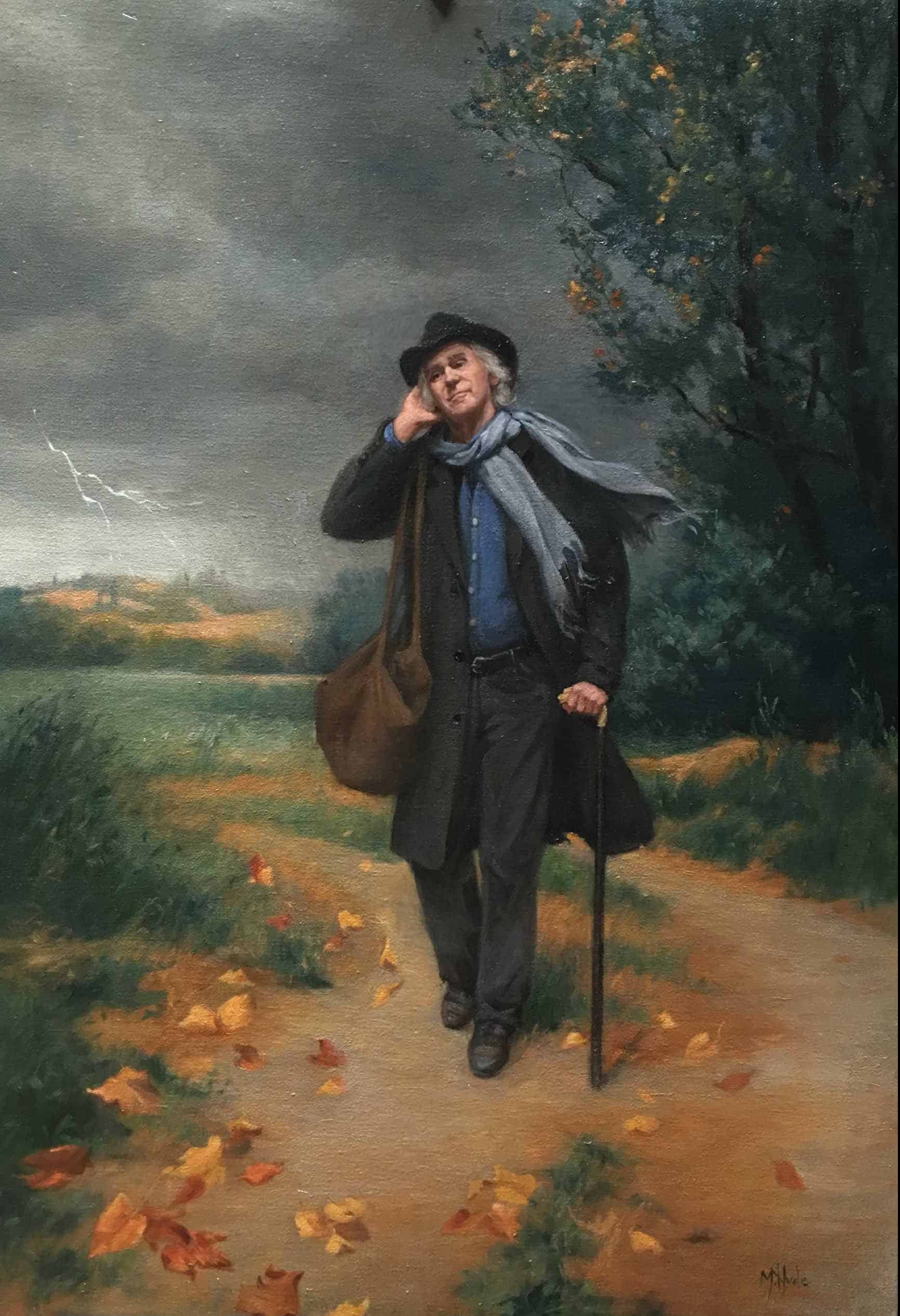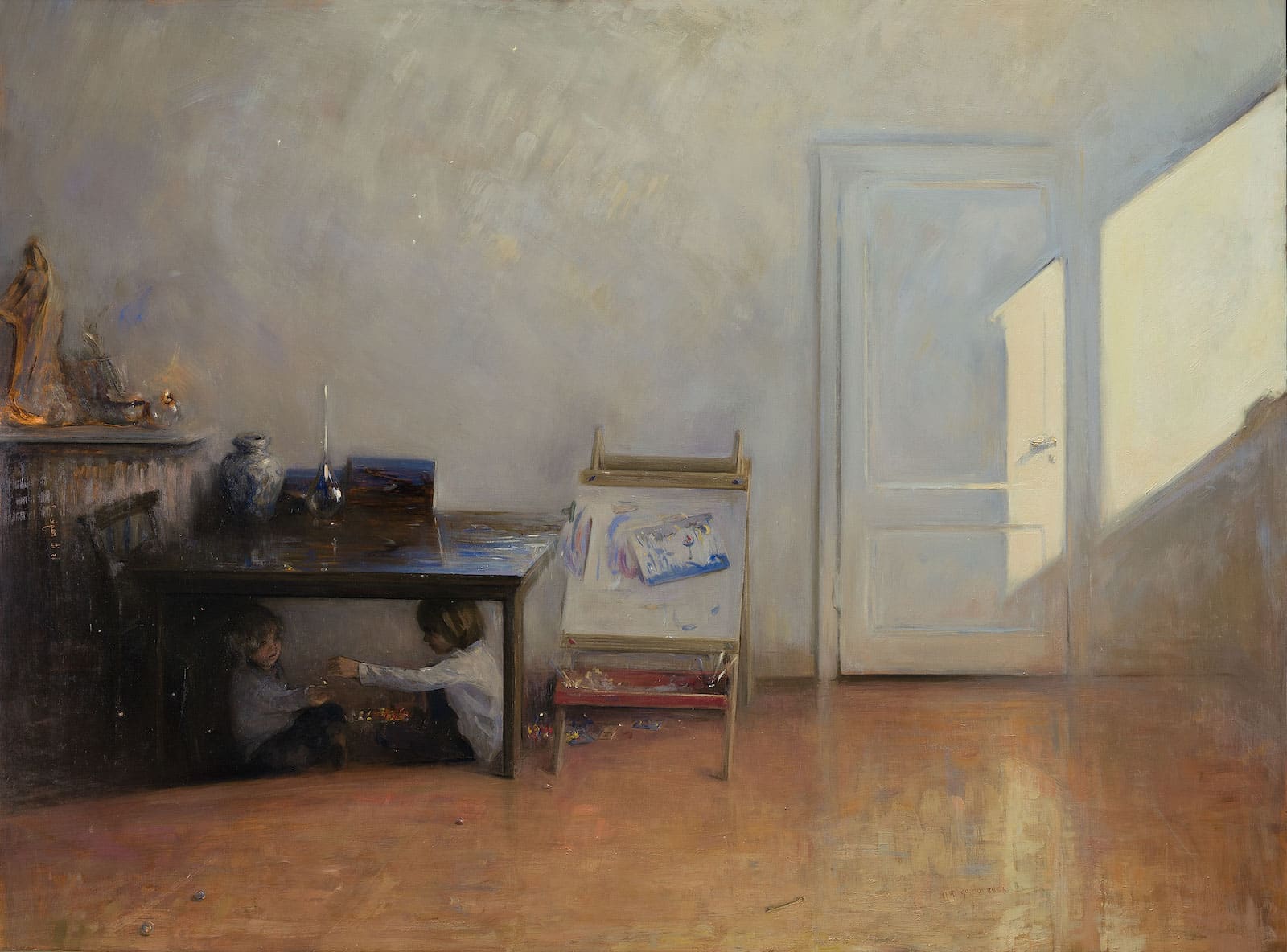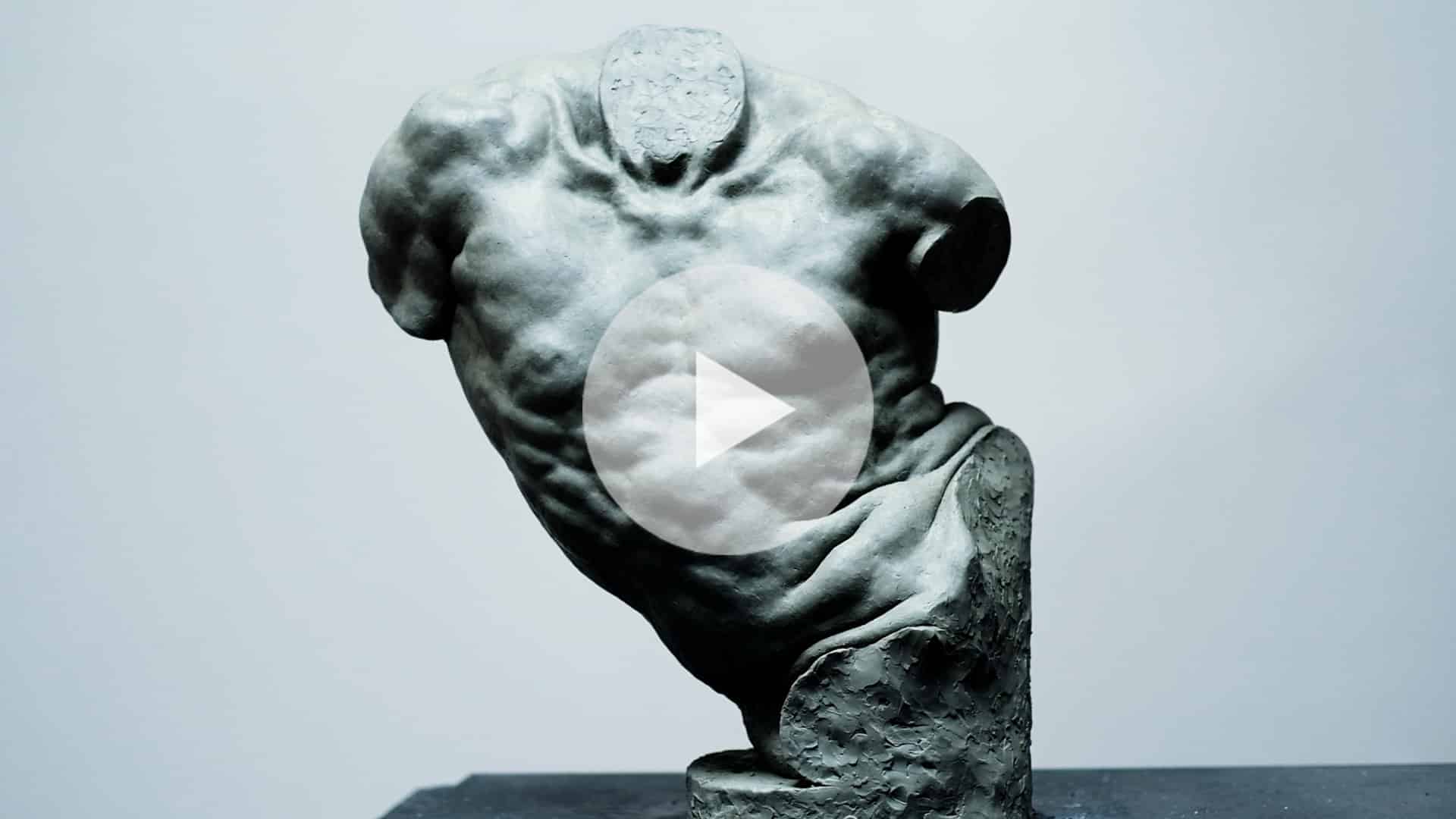December 13, 2022 / Spotlight on Art
Ajax and Cassandra Master Copy by
Troy Argyros
The exquisite rhythms, the fine and highly expressive drawing of the human figure in states of tension and movement, and the variety in paint application, enticed me to copy this piece and unlock its wisdom.
Troy Argyros painting his master copy of Ajax and Cassandra, Art Gallery of Ballarat
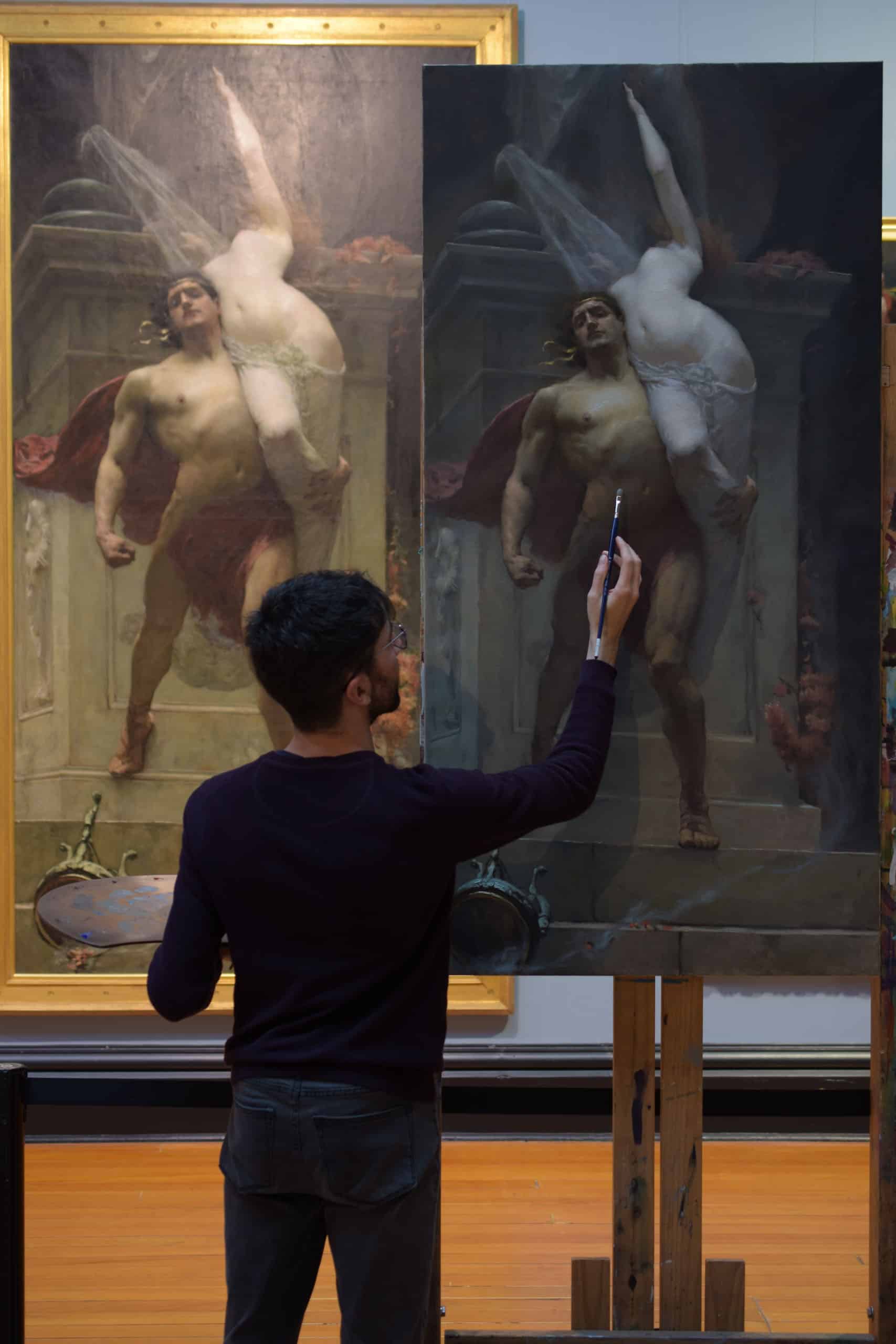
Like many others around the globe, Troy Argyros, an Australian painter and now graduate of The Florence Academy of Art had his plans changed and life impacted by the pandemic. While in the midst of his third and final year at the academy, he found himself back at home in Australia, far away from the daily critiques and instruction of the FAA. Although unable to return to school for several months, Troy sought an opportunity that many painters have used as a tool for learning before, he sought to copy from the masters.
Copying from collections is a tried and true learning opportunity for the realist painter. As noted in The Art Museum as Educator, when the Louvre was first opened to the public in 1793 it set aside five of every ten days exclusively for artists to study and copy its collections. In the same manner, when the first American museums were formed nearly a century later, they adopted the same policy, and giving artists and students permission to paint or model from the works in their galleries became a fundamental means of museum education.
“As a way to continue my academic art training – which was interrupted by the Covid-19 pandemic in March 2020, I approached The Art Gallery of Ballarat with a request to undertake a copy of their epic masterpiece, “Ajax and Cassandra”, by Solomon J Solomon, 1886. They graciously accepted my proposal, and I worked on the copy during the middle of 2021 and again in June 2022.”
Troy Argyros
“Ajax and Cassandra” after Solomon J Solomon
Oil on linen
152.5 x 76 cm
2022
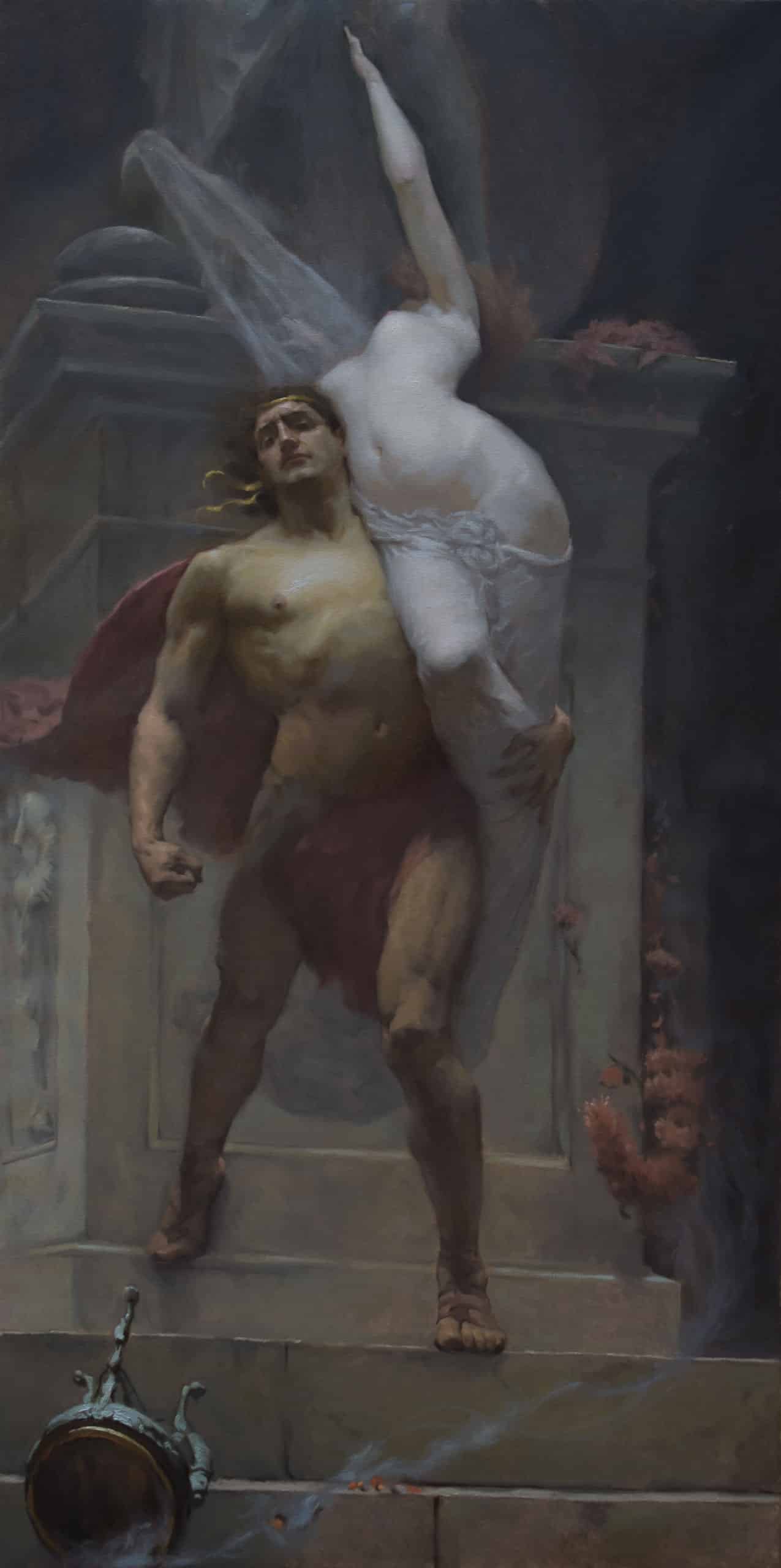
Troy Argyros
“Ajax and Cassandra” after Solomon J Solomon
Oil on linen
152.5 x 76 cm
2022
The painting tells a tale from Greek mythology and depicts the moment of Ajax the Lesser cruelly abducting a woman and oracle named Cassandra from the temple of Athena. In Greek mythological canon Cassandra was a daughter of Priam (the last Trojan King) according to Homer’s Iliad, and as found in Aeschylus’s tragedy Agamemnon was also an oracle who, in punishment for rejecting the god Apollo, was cursed by him to never be believed. In the painting, Argyros notes: “Cassandra’s incense burner falls to the ground; smoke, leaves and flowers are carried by that force throughout the scene. Her dress is caught on the sculpture above, and her alabaster body stretches backwards, heightening the sense of struggle in this dramatic encounter.”
When asked why he chose this story Troy said: “The exquisite rhythms, the fine and highly expressive drawing of the human figure in states of tension and movement, and the variety in paint application, enticed me to copy this piece and unlock its wisdom.”
Troy finds master copies to be a valuable learning experience for an artist: “Master copies are an excellent way to learn artistic language. The process has a lot in common with a Bargue or a cast drawing: a simple block-in, studying the interconnectedness of all the parts into a cohesive whole; identifying and replicating shapes that bring you closer to the visual impression; explaining the smaller forms and local particularities that take the representation from general to specific. It’s like speaking directly with that artist; if you see a shape, they probably saw that shape too, and consciously designed it.”
Progress stages of Troy’s master copy
“Ajax and Cassandra”
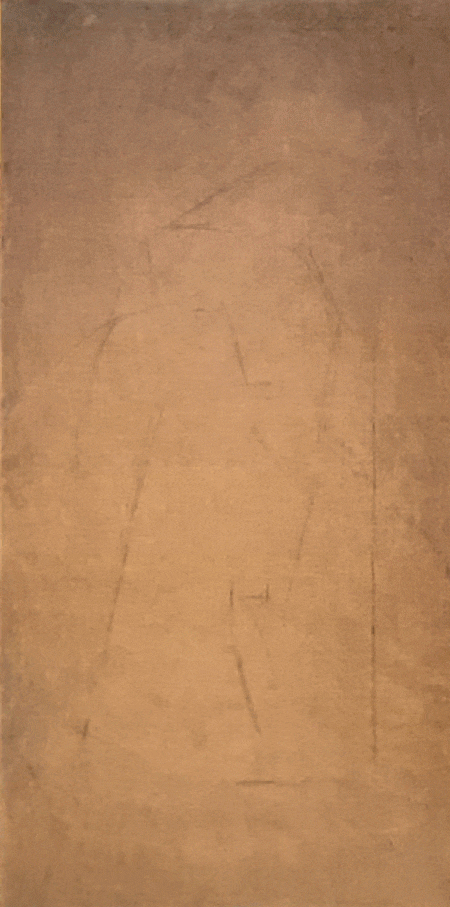
Progress stages of Troy’s master copy
“Ajax and Cassandra”
While copying may not give the same insights and lessons as formal academic education, there is much to be learned from the practice. As Daniel Burleigh Parkhurst states in The Painter in Oil, “the use of copying is not to find out how to paint, but to see how many ways there are of painting… Copying does not help you to perceive, it can only help to show you how something can be expressed after it has been perceived… handling, composition, management of color, technique of the brush generally, may be studied by copying.” Troy’s understanding is much the same: “Children mimic their parents’ speech until they can use language for their own self-expression. Similarly, a student of art undertaking a copy gains an insight into how that artist translated nature. The next step is to understand that which you faithfully mimicked, and integrate it with your own translation of nature. It may heavily inform your evolution as an artist, or unlock your own unique way of translating nature into artistic form.”
View of the set up at the Art Gallery of Ballarat.
On the left: original painting “Ajax and Cassandra”
by Solomon J Solomon, 1886
next to Troy’s copy.
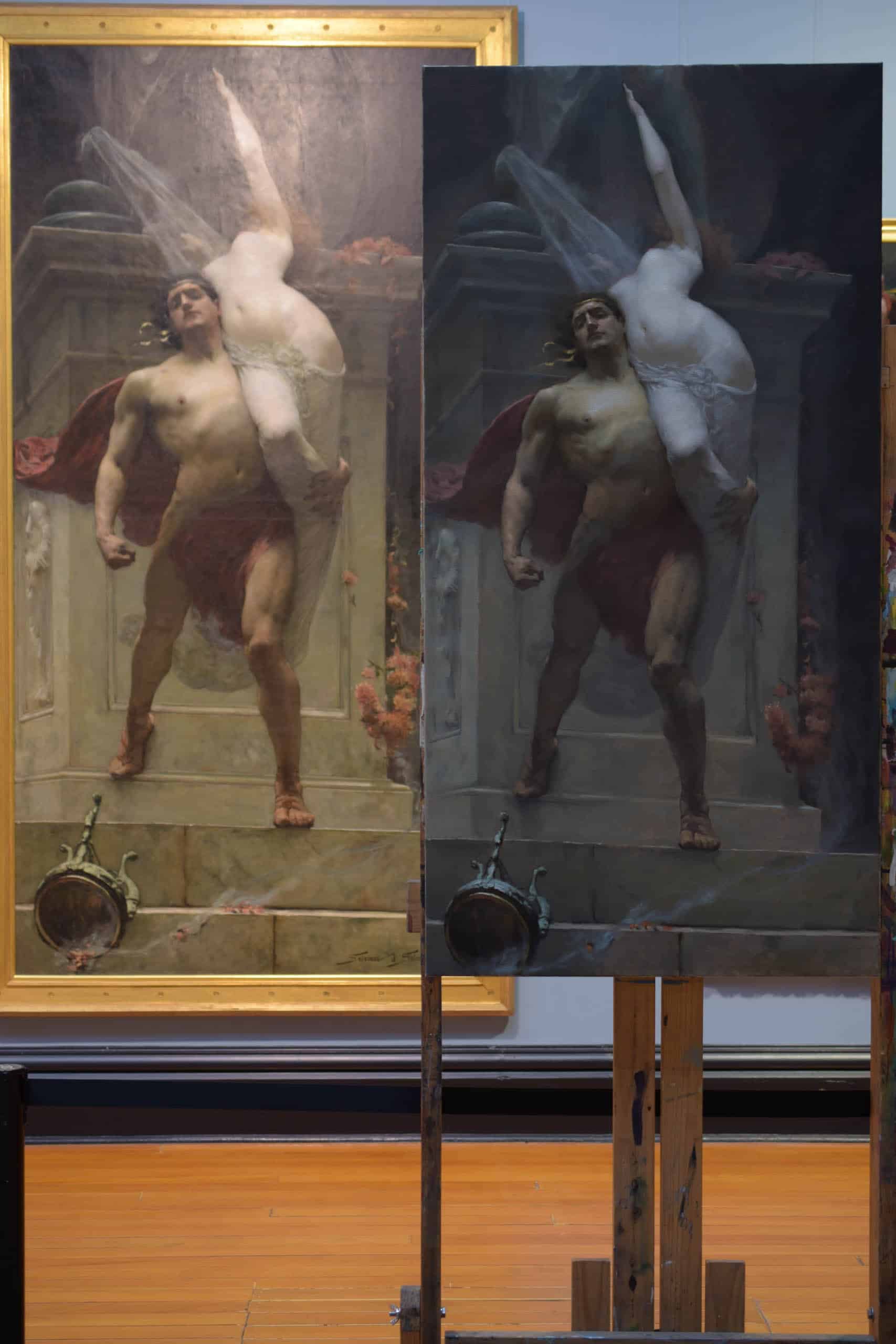
View of the set up at the Art Gallery of Ballarat.
On the left: original painting “Ajax and Cassandra”
by Solomon J Solomon, 1886
next to Troy’s copy.
In line with the master copy policy at most institutions, the study cannot be the same size or dimensions as the original. The undertaking of this project at a true to life scale would have been incredibly ambitious and near impossible with the facilities and capacities of the museum and their copy program.
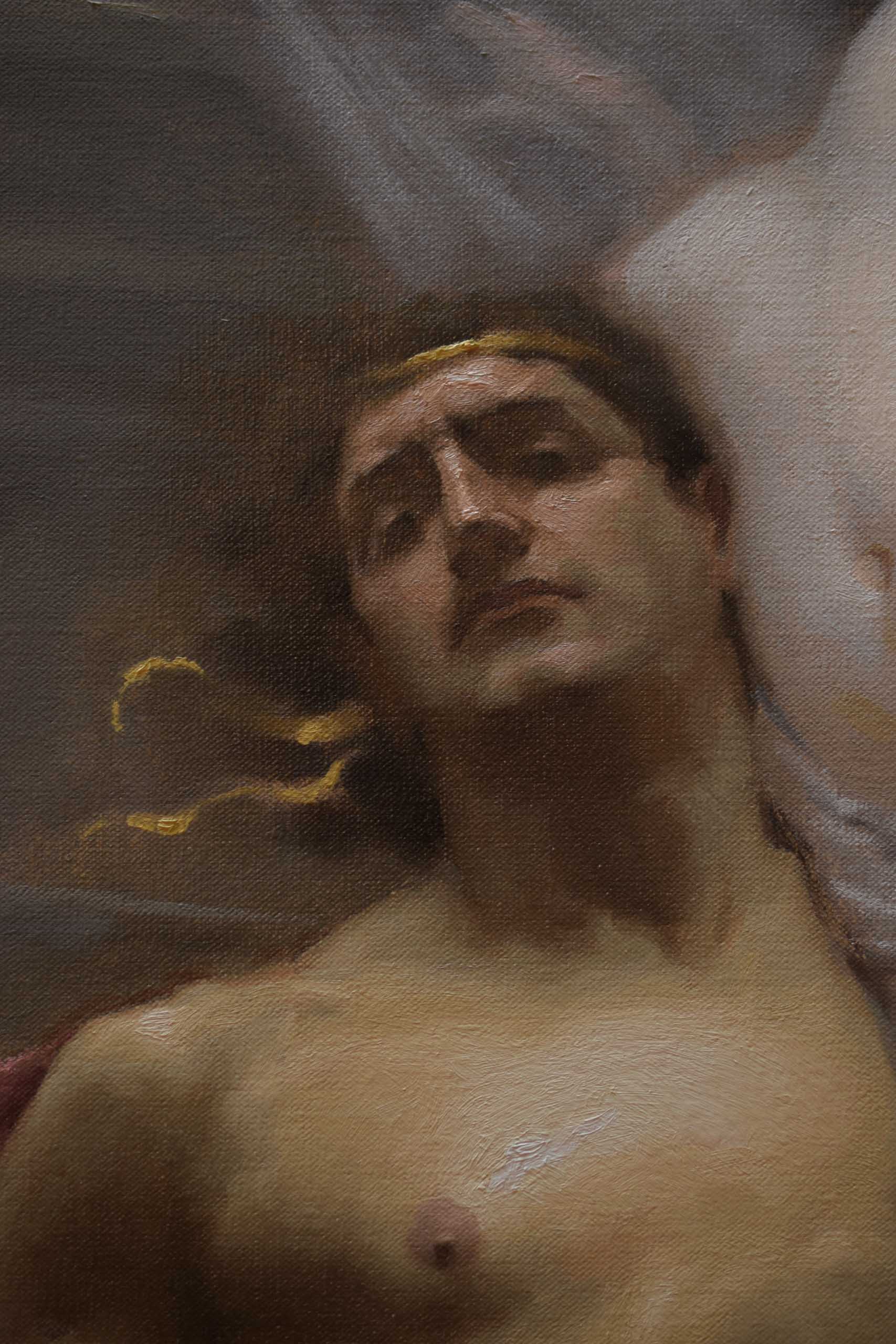
Detail of the face of Ajax the Lesser
painted by Troy Argyros
Describing some details behind making this museum master copy Troy said:
“At The Florence Academy, we study one figure at a time, and they are usually holding a conventionally static pose. As an extension of that training, I thought it would be enriching to make a master copy of multiple figures in movement, which also engage the space they inhabit. My painting is half the true scale, and I used the sight size technique as I would at the academy, to ensure accurate drawing and to keep in practice for my upcoming return to Florence.”
Troy Argyros
“The Oracle”
Oil on linen
100 x 70 cm
2021
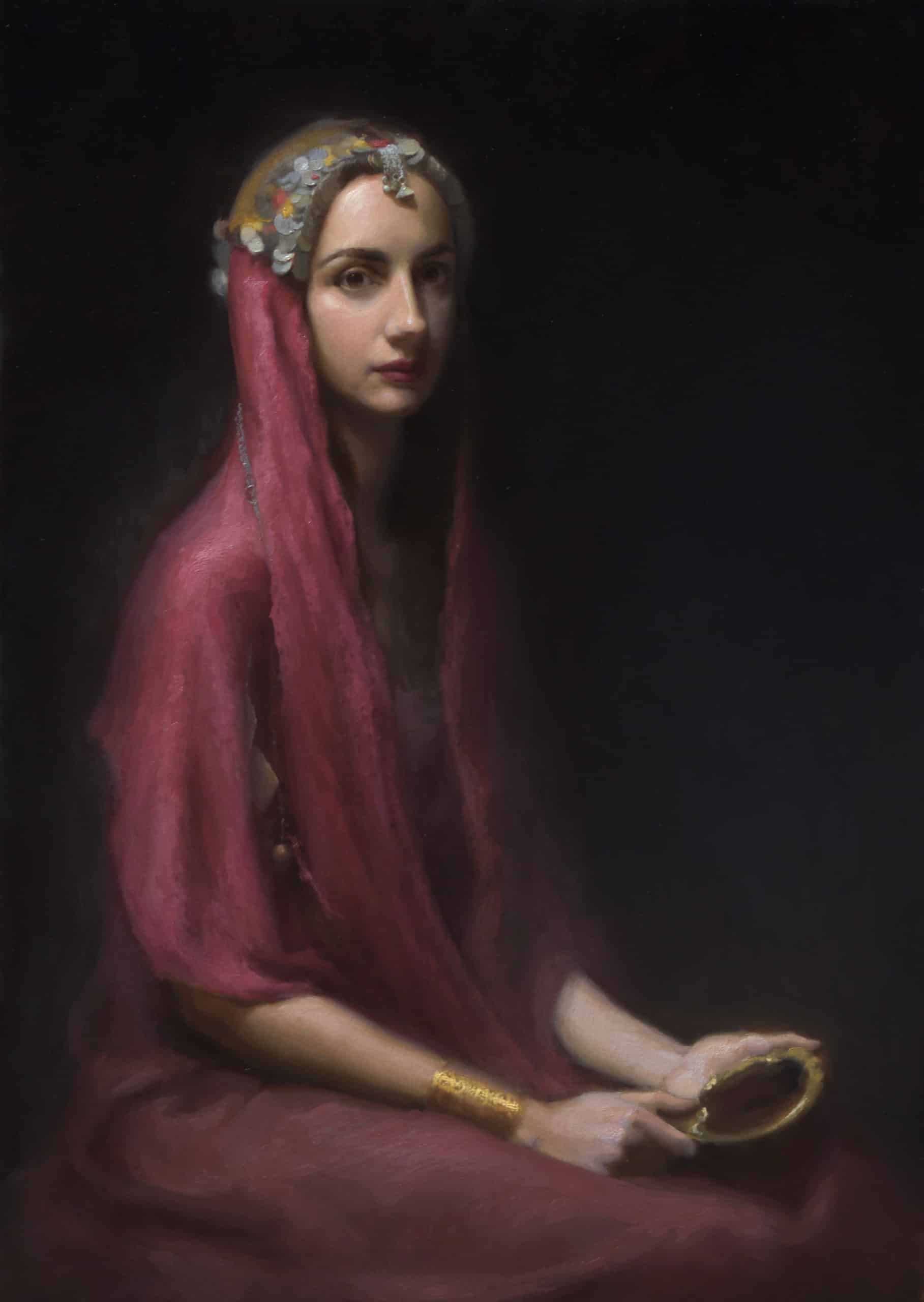
Troy Argyros
“The Oracle”
Oil on linen
100 x 70 cm
2021
The experience of copying and its influence stayed with Troy long after painting:
“In October 2021, I resumed my studies at The Florence Academy, and created my final project “The Oracle”, which was inspired by the story of the tragic priestess in Solomon’s painting. But now, she has a face, restoring her dignity and exploring the psychology of this fascinating archetype, blessed with the gift of profound insight.”
More about Troy Argyros
Troy Argyros is an Australian painter based in Ballarat, Victoria. He is a 2021 graduate of the Painting Program at The Florence Academy of Art, and holds a Bachelor of Fine Art Painting and a Graduate Diploma of Visual Art Education from Monash University in Melbourne. He was the recipient of The Graeme Hildebrand Prize for Emerging Artists in 2017, and has been a finalist in The AME Bale Traveling Scholarship and The Eutick Memorial Still Life Award.
Troy’s work is generally developed slowly in a succession of layers, and focuses on the sensitive portrayal of light and atmosphere, and the delicate rendering of form and detail, predominantly within the genres of portraiture and still life.



